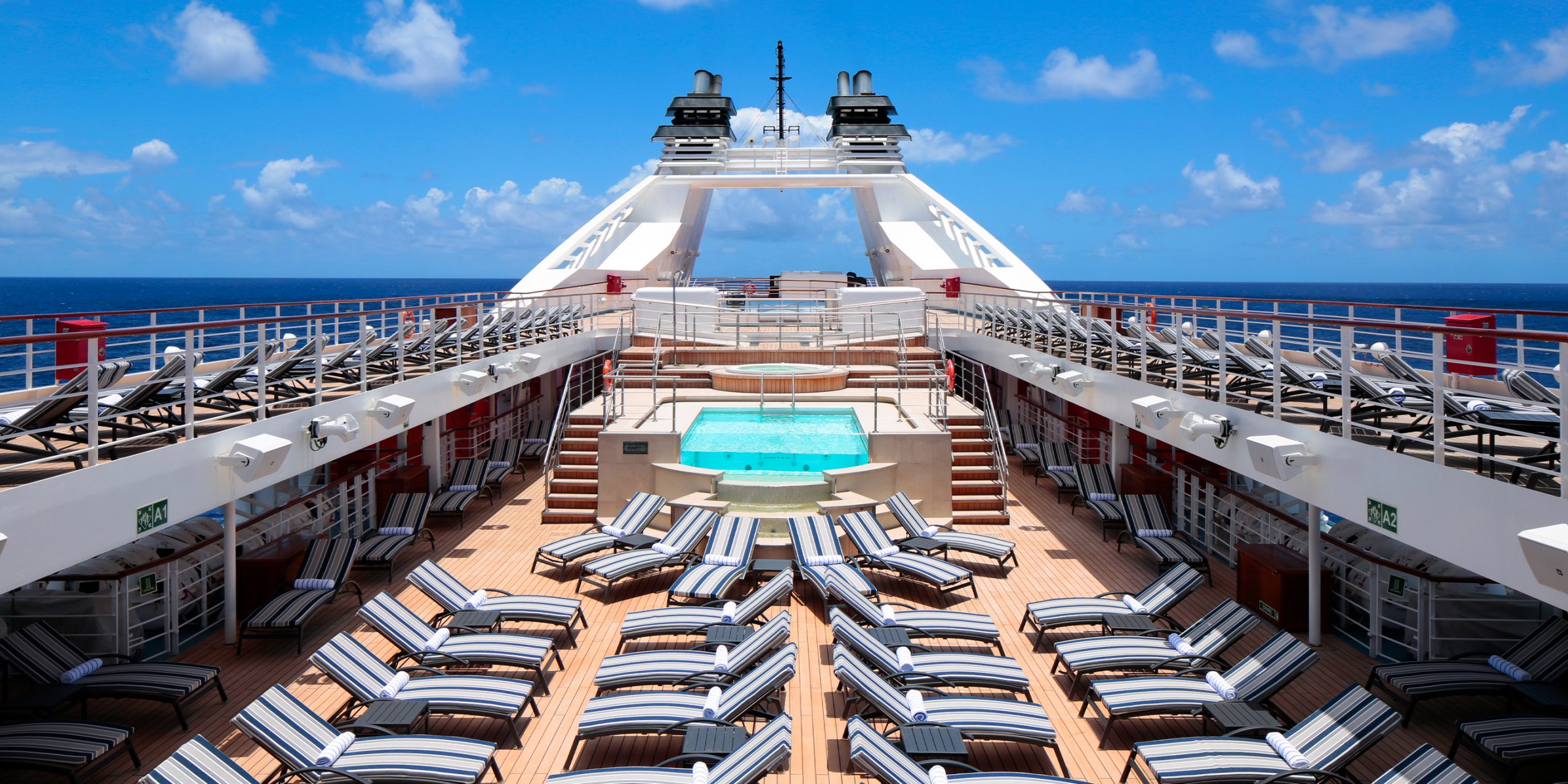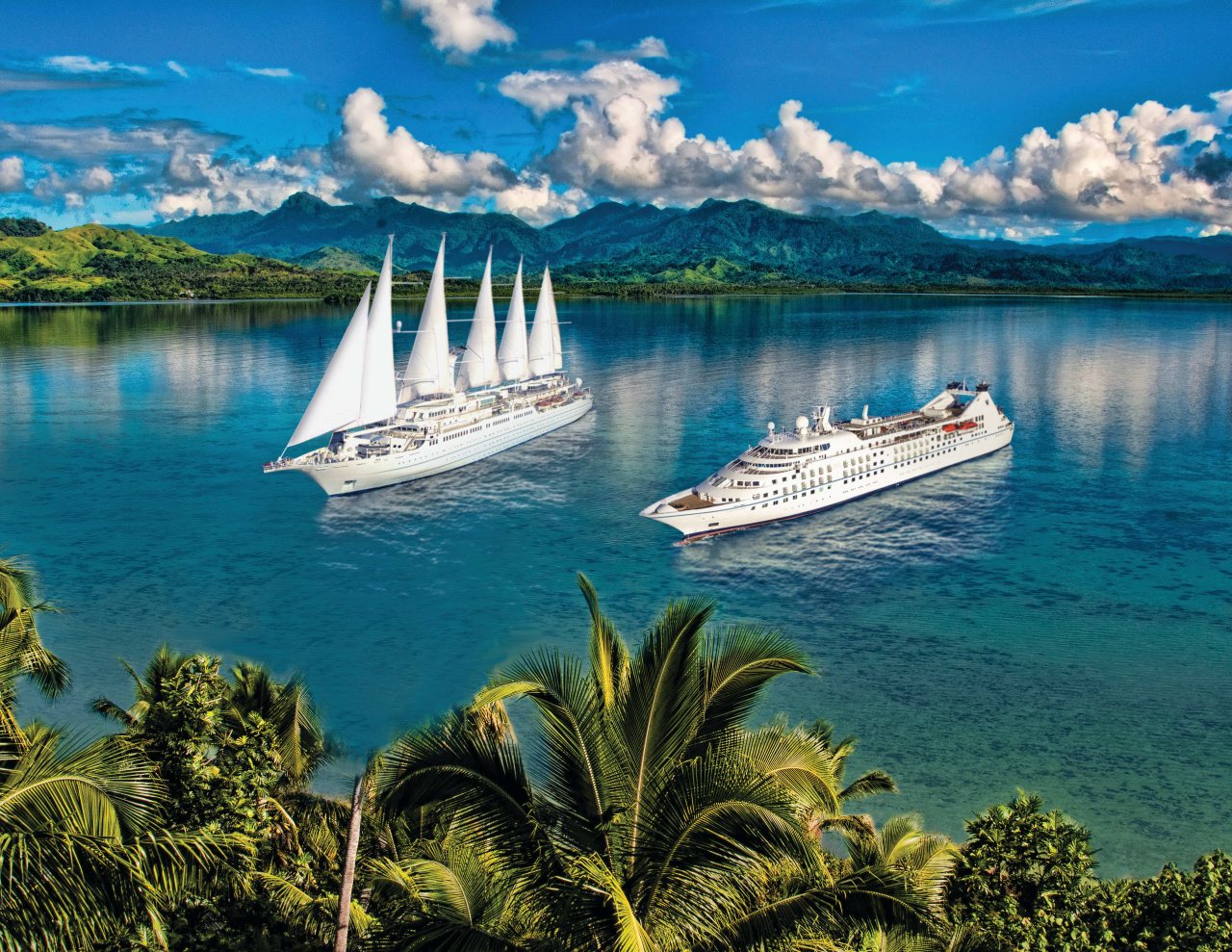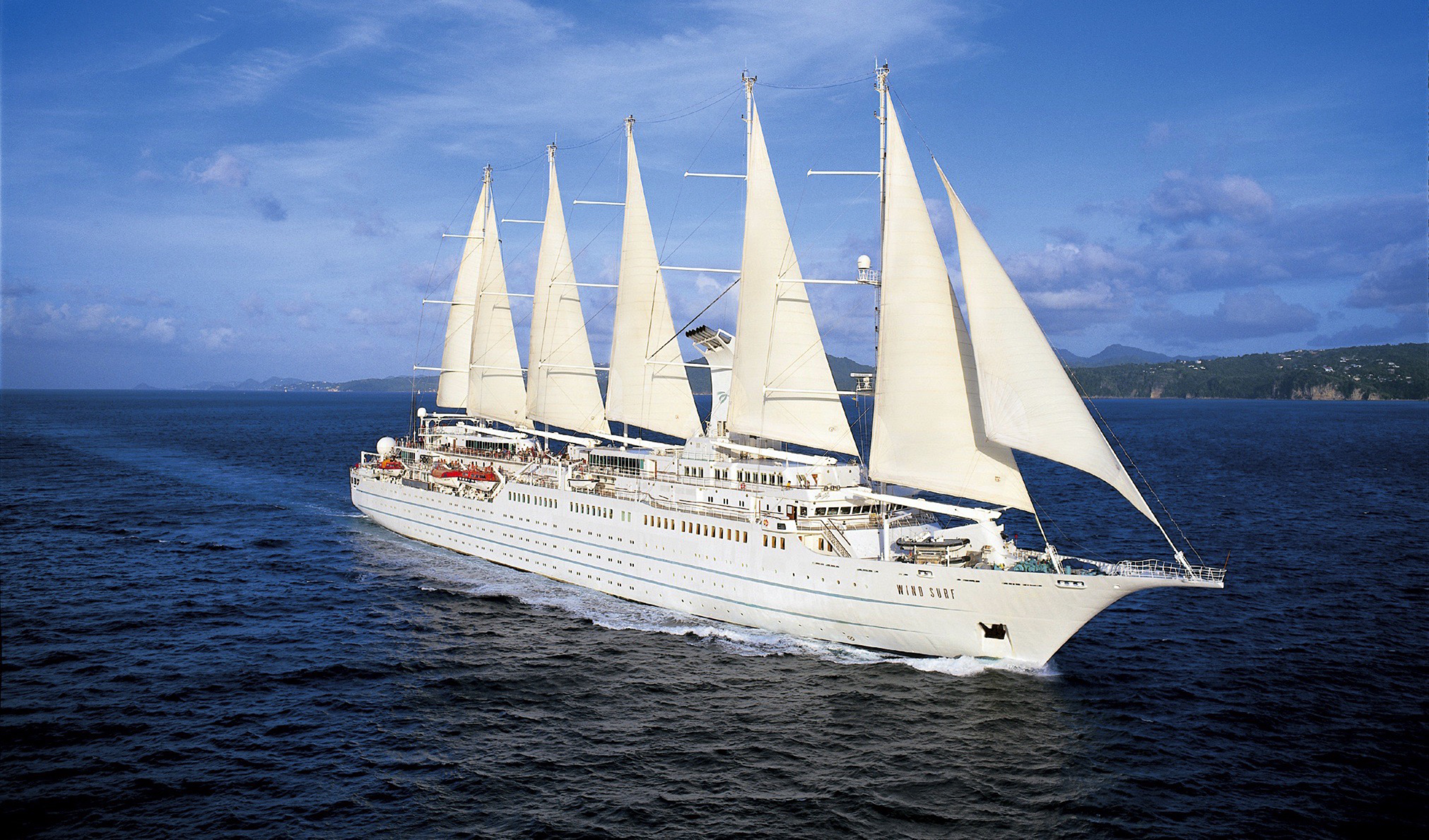Itinerary
The capital of Dutch St. Maarten stretches about a mile (1½ km) along an isthmus between Great Bay and the Salt Pond and has five parallel streets. Most of the village’s dozens of shops and restaurants are on Front Street, narrow and cobblestone, closest to Great Bay. It’s generally congested when cruise ships are in port, because of its many duty-free shops and several casinos. Little lanes called steegjes connect Front Street with Back Street, which has fewer shops and considerably less congestion. Along the beach is a ½-mile-long (1-km-long) boardwalk with restaurants and several Wi-Fi hot spots.Wathey Square (pronounced watty) is in the heart of the village. Directly across from the square are the town hall and the courthouse, in a striking white building with cupola. The structure was built in 1793 and has served as the commander’s home, a fire station, a jail, and a post office. The streets surrounding the square are lined with hotels, duty-free shops, restaurants, and cafés. The Captain Hodge Pier, just off the square, is a good spot to view Great Bay and the beach that stretches alongside.
Day itinerary:
Pastel-colored buildings and shops filled with tempting souvenirs herald your arrival to bustling Philipsburg. Situated near the harbor on the Dutch side of St. Maarten, Philipsburg owes its discovery to Christopher Columbus in 1493. Today, celebrated Front Street is home to a number of local Creole restaurants as well as jewelry stores, stylish boutiques, and lively casinos for visitors seeking an upbeat island experience.
The British colonial influence is everywhere in pretty English Harbour. And yet, located on Antigua’s south coast, you are just minutes away from some of the loveliest beaches in the Caribbean. With its long ribbons of white sandy shores including the superbly named Rendez-Vous Bay Beach, the cold English drizzle and chimes of big ben have never been farther away! English Harbour is how the Caribbean is meant to be. Beautifully restored, the area still retains much in the way of its rich historic past. Nelson’s dockyard is absolutely not to be missed; a working dockyard that dates from the 18th century, this is part of a larger UNESCO World Heritage Site (Nelson’s Dockyard and National Park) which also contains Clarence House and Shirley Heights. Perhaps one of the best examples of British colonial development, the dockyard is named after the famous Admiral who lived on the island in the 1780’s. The fascinating naval history is palpable in all the buildings of this historic site and just a little further along you find beautifully restored warehouses that are now home to enchanting restaurants, art galleries, boutiques and hotels, all proudly stating their historic credentials on prominent, easy to read signs. Venturing beyond the “town” and you’ll find nature trails for all levels of fitness. Famous for having 365 different beaches, it is unsurprising then that a lot of Antiguan life takes place on its sandy shores. Beaches here offer all things to everyone so whether you want to rekindle the romance, indulge in some adrenaline fueled water sports, swim, snorkel or sail your way around the island, you’re sure to find you’re your own personal paradise here.
Day itinerary:
It’s said that Antigua has 365 beaches – one for every day of the year. See how many you can discover as our stay in port stretches into the evening to accommodate them all. Watch the stars come out as darkness falls and imagine how residents of Andromeda must envy you.
Day itinerary:
With its protected shoreline, calm surf, spectacular coral reefs and sugar-soft beaches, Road Bay has become a destination for boaters, with its delightful restaurants, bars, and shops. Anguilla has some of the most beautiful sunsets and delicious rum punch to be found in the Caribbean. It is also home to Cuban tree frogs, red-footed tortoise, green iguanas and five species of bats. Worth checking out is Wallblake House, a heritage plantation house and museum said to be the oldest building on the island and located nearby.
Day itinerary:
Arrive at the boardwalk of Pusser’s Landing and mingle with other yachtsmen in the utterly charming marina at Soper’s Hole. Find a deserted stretch of beach to kick back and ponder this tiny port’s rich heritage of romance, pirates, and adventure. An evening departure features a once-in-a-lifetime romantic sunset Sail Away.
Jost Van Dyke, four miles long, is truly known as the ‘barefoot island’. The smallest of the British Virgin Islands, it is known as a popular destination for yachts and is celebrated for its casual lifestyle, protected anchorages, fine beaches and beachfront restaurants and bars. The island has fewer than 200 inhabitants and they are widely known as a welcoming people. The island’s name conjures up its rich, colorful past. Jost Van Dyke is said to have been named for an early Dutch settler, a former pirate. At Great Harbour, Little Harbour, and White Bay there are safe, protected bays and pristine beaches shaded with coconut palms and seagrape trees. Discover inviting shops selling local treasures, restaurants, and bars. ‘The Painkiller’, one of the Caribbean’s most popular drinks, originated at the Soggy Dollar Bar. Foxy’s and Gertrude’s in White Bay are renowned for drinks made with the island’s famous rum, frosty beers, and tales of pirates and sunken treasure. Explore Jost Van Dyke’s history in the vegetation-covered ruins of centuries-old sugar mills, or on the old trails that crisscross the island. Revel in the natural beauty of the pristine, untouched beaches. Hike up to the highest spot on the island, Majohnny Point, and take in a stunning 360 degree view of the Caribbean. Relax in the natural ‘bubble pool’, a popular tourist attraction. Jost Van Dyke conjures up images of what the British Virgin Islands may have looked like many years ago.
Day itinerary:
For an island comprised of a mere eight square miles, it’s amazing how much there is to do on Jost Van Dyke. Visit the national park on nearby Diamond Cay, snorkel among swaying sponges and angelfish at Sandy Spit, or pilot your own boat around Sir Francis Drake Waterway. After all that, you’ll be ready for an evening drink on the beach — where you can admire your Windstar ship aglow in the harbor.
Jost Van Dyke, four miles long, is truly known as the ‘barefoot island’. The smallest of the British Virgin Islands, it is known as a popular destination for yachts and is celebrated for its casual lifestyle, protected anchorages, fine beaches and beachfront restaurants and bars. The island has fewer than 200 inhabitants and they are widely known as a welcoming people. The island’s name conjures up its rich, colorful past. Jost Van Dyke is said to have been named for an early Dutch settler, a former pirate. At Great Harbour, Little Harbour, and White Bay there are safe, protected bays and pristine beaches shaded with coconut palms and seagrape trees. Discover inviting shops selling local treasures, restaurants, and bars. ‘The Painkiller’, one of the Caribbean’s most popular drinks, originated at the Soggy Dollar Bar. Foxy’s and Gertrude’s in White Bay are renowned for drinks made with the island’s famous rum, frosty beers, and tales of pirates and sunken treasure. Explore Jost Van Dyke’s history in the vegetation-covered ruins of centuries-old sugar mills, or on the old trails that crisscross the island. Revel in the natural beauty of the pristine, untouched beaches. Hike up to the highest spot on the island, Majohnny Point, and take in a stunning 360 degree view of the Caribbean. Relax in the natural ‘bubble pool’, a popular tourist attraction. Jost Van Dyke conjures up images of what the British Virgin Islands may have looked like many years ago.
Day itinerary:
For an island comprised of a mere eight square miles, it’s amazing how much there is to do on Jost Van Dyke. Visit the national park on nearby Diamond Cay, snorkel among swaying sponges and angelfish at Sandy Spit, or pilot your own boat around Sir Francis Drake Waterway. After all that, you’ll be ready for an evening drink on the beach — where you can admire your Windstar ship aglow in the harbor.
You can easily explore all of Gustavia during a two-hour stroll. Some shops close from noon to 3 or 4, so plan lunch accordingly, but stores stay open past 7 in the evening. Parking in Gustavia is a challenge, especially during vacation times. A good spot to park is rue de la République, alongside the catamarans, yachts, and sailboats.
Day itinerary:
Affectionately known as St. Barts, the Caribbean’s most chic island adds a French flair to Riviera-like beaches and duty-free boutiques. Walk past gingerbread cottages in search of celebrities, shop for designer fashions, or sip the island’s signature ti punch as kite surfers fly by.
The capital of Dutch St. Maarten stretches about a mile (1½ km) along an isthmus between Great Bay and the Salt Pond and has five parallel streets. Most of the village’s dozens of shops and restaurants are on Front Street, narrow and cobblestone, closest to Great Bay. It’s generally congested when cruise ships are in port, because of its many duty-free shops and several casinos. Little lanes called steegjes connect Front Street with Back Street, which has fewer shops and considerably less congestion. Along the beach is a ½-mile-long (1-km-long) boardwalk with restaurants and several Wi-Fi hot spots.Wathey Square (pronounced watty) is in the heart of the village. Directly across from the square are the town hall and the courthouse, in a striking white building with cupola. The structure was built in 1793 and has served as the commander’s home, a fire station, a jail, and a post office. The streets surrounding the square are lined with hotels, duty-free shops, restaurants, and cafés. The Captain Hodge Pier, just off the square, is a good spot to view Great Bay and the beach that stretches alongside.
Day itinerary:
Pastel-colored buildings and shops filled with tempting souvenirs herald your arrival to bustling Philipsburg. Situated near the harbor on the Dutch side of St. Maarten, Philipsburg owes its discovery to Christopher Columbus in 1493. Today, celebrated Front Street is home to a number of local Creole restaurants as well as jewelry stores, stylish boutiques, and lively casinos for visitors seeking an upbeat island experience.
Mountainous St. Kitts, the first English settlement in the Leeward Islands, crams some stunning scenery into its 65 square miles (168 square km). Vast, brilliant green fields of sugarcane (the former cash crop, now slowly being replanted) run to the shore. The fertile, lush island has some fascinating natural and historical attractions: a rain forest replete with waterfalls, thick vines, and secret trails; a central mountain range dominated by the 3,792-foot Mt. Liamuiga, whose crater has long been dormant; and Brimstone Hill, known in the 18th century as the Gibraltar of the West Indies. St. Kitts and Nevis, along with Anguilla, achieved self-government as an associated state of Great Britain in 1967. In 1983 St. Kitts and Nevis became an independent nation. English with a strong West Indian lilt is spoken here. People are friendly but shy; always ask before you take photographs. Also, be sure to wear wraps or shorts over beach attire when you’re in public places.
Day itinerary:
With Georgian architecture situated against an irresistible backdrop of emerald green hills, Basseterre is one of the loveliest of the Caribbean’s small capitals. Beyond town, more than a quarter of St. Kitts has been set aside as Brimstone Hill Fortress national Park, a UNESCO World Heritage Site.
You can easily explore all of Gustavia during a two-hour stroll. Some shops close from noon to 3 or 4, so plan lunch accordingly, but stores stay open past 7 in the evening. Parking in Gustavia is a challenge, especially during vacation times. A good spot to park is rue de la République, alongside the catamarans, yachts, and sailboats.
Day itinerary:
Affectionately known as St. Barts, the Caribbean’s most chic island adds a French flair to Riviera-like beaches and duty-free boutiques. Walk past gingerbread cottages in search of celebrities, shop for designer fashions, or sip the island’s signature ti punch as kite surfers fly by.
Day itinerary:
This is the Caribbean as you’ve always imagined it, with yacht-filled harbors set against volcanic mountains and endless stretches of palm-fringed beach. The underwater world here attracted the likes of Jacques Cousteau, but even novice snorkelers will enjoy exploring these impossibly blue waters.
The small island of Mayreau, just one and 1/2 square miles in area (3.9 square kilometres) is the smallest inhabited island of The Grenadines, and is part of the independent state of St.Vincent in the eastern Caribbean Sea. Two of the best known islands in The Grenadines are Mustique and Bequia, the second largest island in this group. The Grenadine Islands are strung out in a gentle sweep between St.Vincent and Grenada. Most visitors to Mayreau arrive from cruise ships, on the regular ferry, or by yacht. There are no proper roads on the island, only a few vehicles, no airport and only a single unnamed village. Mayreau and the neighboring Tobago Cays are very popular for divers and snorkellers. Saline Bay, on the west coast of the island, has a wonderful broad beach and a few local vendors selling T-shirts and local craft. A climb up the road to the hilltop village on the island provides breathtaking views across Mayreau, Canouan, the Tobago Cays and Carriacou.
Day itinerary:
With fewer than 300 inhabitants and miles of secluded beaches, it’s easy to feel as if you’re on your own private island. Saline Bay is a delightful anchorage that separates the Caribbean from the Atlantic – and a perfect place to play with some of the toys from the Watersports Platform.
Day itinerary:
Charming Kingstown, the capital and main commercial center of St. Vincent & the Grenadines is known for its churches, cobblestone streets, colonial buildings and the St. Vincent Botanical Gardens, founded in 1765. Steep hills surround the town, with Fort Charlotte sitting high on a ridge north of the city, offering panoramic views of Kingstown and the surrounding islands. Other sites to see include St. George’s Anglican Cathedral, an 1820s structure adorned with stained glass windows, St. Mary’s Catholic Cathedral, built in 1823, with its lovely Gothic spires and Romanesque columns and arches.
Located beside the island’s only natural harbour, the capital of Barbados combines modern and colonial architecture with glorious palm tree-lined beaches and a number of historical attractions. Experience the relaxed culture of the city renowned for its British-style parliament buildings and vibrant beach life, and seek out the Anglican church and the 19th-century Barbados Garrison. The distance between the ship and your tour vehicle may vary. This distance is not included in the excursion grades.
Day itinerary:
Jolly old England comes to life in the city and its garrison, both UNESCO World Heritage Sites. Further afield, you’ll find historic sugar plantations and the fairyland magic of Harrison’s Cave.
Day itinerary:
Martinique offers a delightful and distinctive blend of French and Caribbean influences, with a bounty of historical sites, museums and a wide array of excellent shopping. Be sure to take a tour of the beautiful Jardin de Balata Botanical Gardens with exotic plants from around the world and a treetop walkway affording mountain views.
The typical image of a lush tropical paradise comes to life on the friendly island of St Lucia. Despite its small size – just 27 miles long and 14 miles wide – St Lucia is rich in natural splendour with dense emerald rainforest, banana plantations and orchards of coconut, mango and papaya trees. The twin peaks of Les Pitons, now a UNESCO World Heritage Site rise dramatically 2,000 feet into the sky and dominate the island. Look out for unusual birds with brilliant plumage such as the St Lucia parrot, see a surprising diversity of exotic flora and enjoy the warm hospitality of the islanders in the small villages and open-air markets. Please be aware that St Lucia is a small, mountainous island, with steep, winding and bumpy roads. Customers with back and neck problems should take this into consideration when booking an excursion.
Day itinerary:
The capital and largest city of St. Lucia is a bustling port where shoppers flock. Most of the city’s historic buildings were destroyed in major fires between 1785 and 1948 but you’ll see the beautiful, scenic backdrop of Morne Fortune (elev. 2,795 ft.) and the bustling harbor. Visit the Castries Market for handicrafts, fruits and vegetables, see the murals painted by a local artist and housed in the Cathedral of the Immaculate Conception, and check out one of the many restaurants or Derek Walcott Square.
Day itinerary:
The UNESCO site Pitons’ with their two majestic volcanic peaks and 24 miles of vibrant coral reef welcome you to St. Lucia. Nearby Pigeon Island National Park features impressive ruins of English forts, archaeological relics of Arawak Indians, and splendid beaches.
Day itinerary:
The UNESCO site Pitons’ with their two majestic volcanic peaks and 24 miles of vibrant coral reef welcome you to St. Lucia. Nearby Pigeon Island National Park features impressive ruins of English forts, archaeological relics of Arawak Indians, and splendid beaches.
Bequia is a Carib word meaning “island of the cloud.” Hilly and green with several golden-sand beaches, Bequia is 9 miles (14½ km) south of St. Vincent’s southwestern shore; with a population of 5,000, it’s the largest of the Grenadines. Although boatbuilding, whaling, and fishing have been the predominant industries here for generations, sailing has now become almost synonymous with Bequia. Admiralty Bay is a favored anchorage for both privately owned and chartered yachts. Lodgings range from comfortable resorts and villas to cozy West Indian—style inns. Bequia’s airport and the frequent ferry service from St. Vincent make this a favorite destination for day-trippers, as well. The ferry docks in Port Elizabeth, a tiny town with waterfront bars, restaurants, and shops where you can buy handmade souvenirs—including the exquisitely detailed model sailboats that are a famous Bequia export. The Easter Regatta is held during the four-day Easter weekend, when revelers gather to watch boat races and celebrate the island’s seafaring traditions with food, music, dancing, and competitive games.To see the views, villages, beaches, and boatbuilding sites around Bequia, hire a taxi at the jetty in Port Elizabeth. Several usually line up under the almond trees to meet each ferry from St. Vincent.
Day itinerary:
The only ships in port are those small enough to anchor alongside the yachts and fishing boats in Admiralty Bay. Bequia’s whaling heritage is on display in the museum in pretty Port Elizabeth, or watch the island’s famed model boat builders at work on their miniature masterpieces.
The small island of Mayreau, just one and 1/2 square miles in area (3.9 square kilometres) is the smallest inhabited island of The Grenadines, and is part of the independent state of St.Vincent in the eastern Caribbean Sea. Two of the best known islands in The Grenadines are Mustique and Bequia, the second largest island in this group. The Grenadine Islands are strung out in a gentle sweep between St.Vincent and Grenada. Most visitors to Mayreau arrive from cruise ships, on the regular ferry, or by yacht. There are no proper roads on the island, only a few vehicles, no airport and only a single unnamed village. Mayreau and the neighboring Tobago Cays are very popular for divers and snorkellers. Saline Bay, on the west coast of the island, has a wonderful broad beach and a few local vendors selling T-shirts and local craft. A climb up the road to the hilltop village on the island provides breathtaking views across Mayreau, Canouan, the Tobago Cays and Carriacou.
Day itinerary:
With fewer than 300 inhabitants and miles of secluded beaches, it’s easy to feel as if you’re on your own private island. Saline Bay is a delightful anchorage that separates the Caribbean from the Atlantic – and a perfect place to play with some of the toys from the Watersports Platform.
Nutmeg, cinnamon, cloves, cocoa those heady aromas fill the air in Grenada (pronounced gruh-nay-da). Only 21 miles (33½ km) long and 12 miles (19½ km) wide, the Isle of Spice is a tropical gem of lush rain forests, white-sand beaches, secluded coves, exotic flowers, and enough locally grown spices to fill anyone’s kitchen cabinet. St. George’s is one of the most picturesque capital cities in the Caribbean, St. George’s Harbour is one of the most picturesque harbors, and Grenada’s Grand Anse Beach is one of the region’s finest beaches. The island has friendly, hospitable people and enough good shopping, restaurants, historic sites, and natural wonders to make it a popular port of call. About one-third of Grenada’s visitors arrive by cruise ship, and that number continues to grow each year. Grenada’s capital is a bustling West Indian city, much of which remains unchanged from colonial days. Narrow streets lined with shops wind up, down, and across steep hills. Brick warehouses cling to the waterfront, and pastel-painted homes rise from the waterfront and disappear into steep green hills. The horseshoe-shaped St. George’s Harbour, a submerged volcanic crater, is arguably the prettiest harbor in the Caribbean. Schooners, ferries, and tour boats tie up along the seawall or at the small dinghy dock. The Carenage (pronounced car-a-nahzh), which surrounds the harbor, is the capital’s center. Warehouses, shops, and restaurants line the waterfront. The Christ of the Deep statue that sits on the pedestrian plaza at the center of The Carenage was presented to Grenada by Costa Cruise Line in remembrance of its ship, Bianca C, which burned and sank in the harbor in 1961 and is now a favorite dive site. An engineering feat for its time, the 340-foot-long Sendall Tunnel was built in 1895 and named for Walter Sendall, an early governor. The narrow tunnel, used by both pedestrians and vehicles, separates the harbor side of St. George’s from the Esplanade on the bay side of town, where you can find the markets (produce, meat, and fish), the Cruise Ship Terminal, the Esplanade Mall, and the public bus station.
Day itinerary:
Inhale the intoxicating aroma of the “Isle of Spice” as your eyes feast on what is widely claimed to be the most beautiful city in the Caribbean. Spend the day on 2-mile-long Grand Anse beach, and before you go, a taste of nutmeg ice cream is a must.
Located beside the island’s only natural harbour, the capital of Barbados combines modern and colonial architecture with glorious palm tree-lined beaches and a number of historical attractions. Experience the relaxed culture of the city renowned for its British-style parliament buildings and vibrant beach life, and seek out the Anglican church and the 19th-century Barbados Garrison. The distance between the ship and your tour vehicle may vary. This distance is not included in the excursion grades.
Day itinerary:
Jolly old England comes to life in the city and its garrison, both UNESCO World Heritage Sites. Further afield, you’ll find historic sugar plantations and the fairyland magic of Harrison’s Cave.
Day itinerary:
Listen for the sound of a conch announcing the return of the fishing boats. Bobbing next to us are flotillas of pelicans – hinting at the excellent snorkeling waiting for you here and in neighboring Pirate’s Bay.
The small island of Mayreau, just one and 1/2 square miles in area (3.9 square kilometres) is the smallest inhabited island of The Grenadines, and is part of the independent state of St.Vincent in the eastern Caribbean Sea. Two of the best known islands in The Grenadines are Mustique and Bequia, the second largest island in this group. The Grenadine Islands are strung out in a gentle sweep between St.Vincent and Grenada. Most visitors to Mayreau arrive from cruise ships, on the regular ferry, or by yacht. There are no proper roads on the island, only a few vehicles, no airport and only a single unnamed village. Mayreau and the neighboring Tobago Cays are very popular for divers and snorkellers. Saline Bay, on the west coast of the island, has a wonderful broad beach and a few local vendors selling T-shirts and local craft. A climb up the road to the hilltop village on the island provides breathtaking views across Mayreau, Canouan, the Tobago Cays and Carriacou.
Day itinerary:
With fewer than 300 inhabitants and miles of secluded beaches, it’s easy to feel as if you’re on your own private island. Saline Bay is a delightful anchorage that separates the Caribbean from the Atlantic – and a perfect place to play with some of the toys from the Watersports Platform.
The oldest town in St. Lucia and the island’s former French colonial capital, Soufrière was founded by the French in 1746 and named for its proximity to the volcano of the same name. The wharf is the center of activity in this sleepy town (population, 9,000), particularly when a cruise ship anchors in pretty Soufrière Bay. French colonial influences are evident in the second-story verandahs, gingerbread trim, and other appointments of the wooden buildings that surround the market square. The market building itself is decorated with colorful murals. Soufrière, the site of much of St. Lucia’s renowned natural beauty, is the destination of most sightseeing trips. This is where you can get up close to the iconic Pitons and visit colonial capital of St. Lucia, with its “drive-in” volcano, botanical gardens, working plantations, waterfalls, and countless other examples of the natural beauty for which St. Lucia is deservedly famous.
Day itinerary:
Nestled in the shadows of the UNESCO Pitons, Soufriere represents the heart and soul of St. Lucia. The tiny town center is full of street vendors and stores and some of the best resorts on the island can be found here. Nearby are secluded waterfalls and the waters here boast some of the best diving around. Sights to see include the Edmund Rainforest Trail, fond Doux Holiday plantation, Robot Estate and the Gros Piton Nature Trail.
Day itinerary:
The ice cream colors of the stucco houses will draw your lens, as will the pink flamingos on the salt pans. But you’ll need a waterproof camera to complete the portrait since more than 400 fish species and 50 types of coral wait beneath the surface
Dutch settlers came here in the 1630s, about the same time they sailed through the Verazzano Narrows to Manhattan, bringing with them original red-tile roofs, first used on the trade ships as ballast and later incorporated into the architecture of Willemstad. Much of the original colonial structures remain, but this historic city is constantly reinventing itself and the government monument foundation is always busy restoring buildings in one urban neighborhood or another. The salty air causes what is called “wall cancer” which causes the ancient abodes to continually crumble over time. The city is cut in two by Santa Anna Bay. On one side is Punda (the point)—crammed with shops, restaurants, monuments, and markets and a new museum retracing its colorful history. And on the other side is Otrobanda (literally meaning the “other side”), with lots of narrow, winding streets and alleyways (called “steekjes” in Dutch), full of private homes notable for their picturesque gables and Dutch-influenced designs. In recent years the ongoing regeneration of Otrobanda has been apparent, marked by a surge in development of new hotels, restaurants, and shops; the rebirth, concentrated near the waterfront, was spearheaded by the creation of the elaborate Kura Hulanda complex.There are three ways to cross the bay: by car over the Juliana Bridge; by foot over the Queen Emma pontoon bridge (locally called “The Swinging Old Lady”); or by free ferry, which runs when the pontoon bridge is swung open for passing ships. All the major hotels outside town offer free shuttle service to town once or twice daily. Shuttles coming from the Otrobanda side leave you at Riffort. From here it’s a short walk north to the foot of the pontoon bridge. Shuttles coming from the Punda side leave you near the main entrance to Ft. Amsterdam.
Day itinerary:
Savor the pastel colors of the historic UNESCO site Old Town and the way the elaborate Dutch gables cut baroque curlicues from the sky. It’s the perfect appetizer for a day of watersports or an adventure below ground at the magical Hato Caves—filled with eerie limestone formations and ancient petroglyphs.
Aruba’s capital is easily explored on foot. Its palm-lined central thoroughfare runs between old and new pastel-painted buildings of typical Dutch design (Spanish influence is also evident in some of the architecture). There are a lot of malls with boutiques and shops—the Renaissance mall carries high-end luxury items and designer fashions. A massive renovation in downtown has given Main Street (a.k.a. Caya G. F. Betico Croes) behind the Renaissance Resort a whole new lease on life: boutique malls, shops, and restaurants have opened next to well-loved family-run businesses. The pedestrian-only walkway and resting areas have unclogged the street, and the new eco-trolley is free and a great way to get around. At this writing, Linear Park was well and will showcase local merchants and artists. There will be activities along a boardwalk that will eventually run all the way to the end of Palm Beach, making it the longest of its kind in the Caribbean.
Day itinerary:
Known for having some of the best beaches in the Caribbean, this Dutch port makes it easy to just … take it easy. Walk through town to choose your favorite carved wooden door, or spend the day like the Arubans do playing dominos at a beachside table.
Day itinerary:
Romantic Santa Marta has it all: history (Colombia’s oldest city), natural beauty (from gentle bays and beaches to the highest coastal mountain range in the world), and its very own celebrity. Simon Bolivar (“The Liberator”) is known as the George Washington of South America, and this was his Mount Vernon. Visit his beautiful estate or head to one of the two UNESCO Biosphere Reserves nearby.
Cartagena’s magnificent city walls and fortresses, now a UNESCO World Heritage Site, enclose a well-restored historic center (the Cuidad Amurallada, or walled city) with plazas, churches, museums, and shops that have made it a lively coastal vacation spot for South Americans and others. New hotels and restaurants make the walled city a desirable place to stay, and the formerly down-at-the-heels Getsemaní neighborhood attracts those seeking a bohemian buzz. The historic center is a small section of Cartagena; many hotels are in the Bocagrande district, an elongated peninsula where high-rise hotels overlook a long, gray-sand beach.When it was founded in 1533 by Spanish conquistador Pedro de Heredia, Cartagena was the only port on the South American mainland. Gold and silver looted from indigenous peoples passed through here en route to Spain and attracted pirates, including Sir Francis Drake, who in 1586 torched 200 buildings. Cartagena’s walls protected the city’s riches as well as the New World’s most important African slave market.
Day itinerary:
Welcome to the sparkling city of Cartagena, where the gold and jewels of the Spanish Main awaited shipment across the Atlantic. No pirate could resist, nor will you be able to when you visit this historic city. The Old Town, a UNESCO World Heritage Site, is surrounded by 400-year-old walls and contains a plethora of churches, fortresses, and restored colonial mansions. Outside the walls are more treasures: Climb the massive Castillo de San Felipe to investigate its maze of hidden tunnels, or shop for the perfect emerald.
Translated as Mouths of the Bull, Bocas del Toro is both a province and an archipelago in the northwest Caribbean Sea in Panama. The archipelago contains 10 larger islands (including the main Isla Colon, where the town of Bocas del Toro is situated), 50 cays and 200 tiny islets. The region contains Isla Bastimentos National Marine Park, Panama’s first national marine park that covers over 32,000 acres and protects forests, mangroves, monkeys, sloths, caiman, crocodile and 28 species of amphibians and reptiles. The park also contains Playa Larga, an important nesting site for sea turtles. With all there is to see in this region, visitors should also pause to enjoy the pristine white beaches lined with palm trees that lie all along the surrounding clear waters of the Chiriqui Lagoon
Day itinerary:
Bocas del Toro on Bastimentos island was visited by Columbus in 1502 and then built up with colorful and Caribbean-style clapboard houses by the United Fruit Company in the early 20th century. Situated on the beautiful Bocas del Toro archipelago, the laid-back and friendly community is a great combination of races and ethnicities living harmoniously. West Indians, Latinos and Extraneros (the resident gringos) make this an easy place to feel right at home and embrace the relaxed Caribbean vibe of the town. Not far from town is the Smithsonian Tropical Research Institute, as well as two national parks, La Amistad and many banana plantations.
The provincial capital of Colón, beside the canal’s Atlantic entrance, is named for the Spanish-language surname of Christopher Columbus, though the Americans called it Aspinwall in the 19th century.. The city was founded in 1850 by Americans working on the Panama railroad and named Aspinwall for one of the railway engineers. Following completion in 1855, Colon gained in importance, which was furthered by the plans for an isthmian canal. During the time of the French canal attempt, a fire in 1885 burned the city nearly to the ground and left thousands of people homeless. Colon was rebuilt in the architectural style then popular in France. Buildings from that era plus the ones constructed by Americans between 1904 and 1914 are still in use today, although the majority is on the verge of collapse. In addition to its importance as a port, Colon boasts the world’s second largest duty-free zone, known as Zona Libre, which is contained in a huge fortress like, walled-off area with giant international stores. However, most of the merchandise is sold in bulk to commercial businesses throughout the country.
Day itinerary:
Explore the inner workings of the Panama Canal, head into the jungle to meet with Embera Indians, or take an aerial tram ride through the rainforest canopy.
The provincial capital of Colón, beside the canal’s Atlantic entrance, is named for the Spanish-language surname of Christopher Columbus, though the Americans called it Aspinwall in the 19th century.. The city was founded in 1850 by Americans working on the Panama railroad and named Aspinwall for one of the railway engineers. Following completion in 1855, Colon gained in importance, which was furthered by the plans for an isthmian canal. During the time of the French canal attempt, a fire in 1885 burned the city nearly to the ground and left thousands of people homeless. Colon was rebuilt in the architectural style then popular in France. Buildings from that era plus the ones constructed by Americans between 1904 and 1914 are still in use today, although the majority is on the verge of collapse. In addition to its importance as a port, Colon boasts the world’s second largest duty-free zone, known as Zona Libre, which is contained in a huge fortress like, walled-off area with giant international stores. However, most of the merchandise is sold in bulk to commercial businesses throughout the country.
Day itinerary:
Explore the inner workings of the Panama Canal, head into the jungle to meet with Embera Indians, or take an aerial tram ride through the rainforest canopy.
Translated as Mouths of the Bull, Bocas del Toro is both a province and an archipelago in the northwest Caribbean Sea in Panama. The archipelago contains 10 larger islands (including the main Isla Colon, where the town of Bocas del Toro is situated), 50 cays and 200 tiny islets. The region contains Isla Bastimentos National Marine Park, Panama’s first national marine park that covers over 32,000 acres and protects forests, mangroves, monkeys, sloths, caiman, crocodile and 28 species of amphibians and reptiles. The park also contains Playa Larga, an important nesting site for sea turtles. With all there is to see in this region, visitors should also pause to enjoy the pristine white beaches lined with palm trees that lie all along the surrounding clear waters of the Chiriqui Lagoon
Day itinerary:
Bocas del Toro on Bastimentos island was visited by Columbus in 1502 and then built up with colorful and Caribbean-style clapboard houses by the United Fruit Company in the early 20th century. Situated on the beautiful Bocas del Toro archipelago, the laid-back and friendly community is a great combination of races and ethnicities living harmoniously. West Indians, Latinos and Extraneros (the resident gringos) make this an easy place to feel right at home and embrace the relaxed Caribbean vibe of the town. Not far from town is the Smithsonian Tropical Research Institute, as well as two national parks, La Amistad and many banana plantations.
The San Andres and Providencia archipelago comprises Colombia’s Caribbean islands, lying some 290 miles north of the South American coast. Palm-dotted San Andres is only eight miles long and two miles wide. It is noted for beautiful sand beaches, crystal-clear waters and good diving sites. At one time the island belonged to Britain and, according to local lore; it was a favorite hideout for the legendary pirate Henry Morgan. In 1822, San Andres came under the control of Colombia. In recent years the original population has greatly increased due to unrestricted immigration from the mainland. There are also Chinese and Middle Eastern communities. The official language is Spanish but English is widely spoken, especially in shops and hotels. The island is best seen via the scenic ring road that offers views of coves, beaches and palm groves. In the interior stands a Baptist church dating from 1847, and the attraction at the southern end is the Hoyo Soplador, a geyser-like hole where the sea shoots jets of water intermittently into the air during the right wind and sea conditions. On the island’s northern tip lies the main town and commercial center, known by the same name as the island. San Andres Town is surrounded by beaches, with small hotels lining the waterfront. Being a duty-free zone, the town often gets crowded with Colombian shoppers who come from the mainland looking for foreign-made goods at duty-free prices. To reach the town from the tender landing requires an approximate 20-minute taxi ride. However, it is not uncommon for drivers to choose the longer way around the island for a higher fare. From the downtown waterfront, boats offer trips to Johnny Cay, a tiny island just a stone’s throw across from town and known for its powdery white sand beach and rustic, laid-back atmosphere. San Andres Island’s main attraction is its location off the beaten track, as well as pretty scenery, sandy beaches and clear, warm waters. Tourism infrastructure is limited. Pier Information The ship is scheduled to anchor off El Cove. Guests will be taken ashore via the ship’s tenders. The landing site is about a 20-minute drive from San Andres Town. There are plenty of taxi drivers offering their services. Please be sure to agree on the fare before setting out (the one-way fare should be around $30). Keep in mind that not all taxi drivers speak English. Shuttle buses are not available. Shopping Most shops in town carry duty-free imports. At New Point Plaza you will find shops selling local souvenir items and jewelry including emeralds. Some stores close between 12:30 p.m. and 3:00 p.m. The local currency is the peso. Many shops will accept U.S. dollars and major credit cards. Cuisine Outdoor cafés are available in town if you fancy a cold drink or a quick snack. Other Sites All of the island’s sights are covered on the San Andres Island Drive. Beaches Swimmers, snorkelers and sun seekers will find beach facilities right in town. One of the hotels also features water sport rentals. Johnny Cay can be reached via local boats departing from the waterfront. However, be aware that winds are fairly strong between November and January, which may cause delays for your return boat ride. There are no tourist facilities on Johnny Cay. Private cars/vans are not available in this port, except for taxis.
Day itinerary:
At 10 square miles, the small island of San Andrés is considered a Colombia hot spot. The island, part of a UNESCO Biosphere Reserve, is multicultural and bilingual with the best beaches, and snorkeling spots. It’s a highlight to snorkel with puffer fish, angel fish, sea turtles and eels in the crystal-clear turquoise waters surrounding the island.
Experience true Caribbean island bliss, during your time on the immaculate paradise of Roatan, which is the largest of the Bay Islands. This slim island is framed by glorious powdery white beaches, and rich ocean beds carpeted with diverse coral reefs – alive with fish and marine life. Curious dolphins roll through the waves just offshore, while beach dwellers soak up the sun, and enjoy coconut cocktails, beside leaning palm trees. The beaches here are nothing short of dreamy – with wooden piers teetering out over the water, and thatched roofs providing welcome shade, as you dangle your legs towards the water.
Day itinerary:
The ocean playground around Roatan is part of the huge Mesoamerican Barrier Reef. These protected waters provide excellent snorkeling, kayaking, swimming with dolphins and other marine life and pristine powdery white beaches. Sample tradition island cuisine like conch, baleadas or pastilles in one of the many excellent cafes accompanied by delicious Honduran coffee
Belize City, a coastal gem, seamlessly blends history and modern vibrancy. Colonial architecture graces lively streets, narrating tales of Mayan roots and cultural richness. A welcoming atmosphere emanates from friendly locals, and diverse festivals celebrate Belize’s heritage. The city serves as a gateway to natural wonders, from serene river rides to the renowned Belize Barrier Reef. Pristine beaches like Old Belize Beach invite relaxation. Culinary delights abound, showcasing Belizean flavours. In this enchanting city, every smile, historical landmark, and cultural celebration embodies the warmth and charm that make Belize City an unforgettable destination.
Day itinerary:
With an origin as a logging camp and exporter of mahogany, Belize City is known now as the gateway to lovely nature and beautiful offshore islands. But stay in town long enough to check out the Swing Bridge – the only functioning manually operated bridge in the world. Then find the Cave Branch River for a float through ancient Mayan caves or visit the howler monkeys at the Community Baboon Sanctuary.
Laid-back coast with sandy beaches & waterfront eateries, plus diving around offshore coral reefs.
Day itinerary:
Costa Maya is the closest gateway to the Chaccoben Mayan Ruins some of which you can climb to get an amazing view. The port features interesting shopping, local artisans and good restaurant and bars. It is part of the massive Mesoamerican Barrier Reef and the Banco Chinchorro Biosphere Reserve, home to sharks, dolphins and turtles and the Sian Ka’an Biosphere Reserve where jaguars, monkeys and hundreds of bird species live.
Cozumel, a Caribbean gem off Mexico’s Yucatán Peninsula, is celebrated for its crystal-clear waters, vibrant coral reefs, and rich Mayan history. A haven for divers and snorkelers, the island is home to the Mesoamerican Reef, teeming with colorful marine life. Beyond the sea, explore ancient ruins like San Gervasio, enjoy local charm in San Miguel’s markets, or relax on pristine beaches. Eco-parks like Punta Sur offer lush landscapes and wildlife encounters. Blending natural beauty, cultural heritage, and adventure, Cozumel promises a tropical escape that captivates every traveler.
Day itinerary:
The Mesamerican Barrier Reef spans 14 miles around the Mexican island of Cozumel and the impressive marine diversity here makes it an excellent place for snorkeling and diving. Chankanaab, an eco-park surrounding a lagoon offers underwater caverns that are home to dolphins, manatees and sea turtles. Or take a ferry ride over to the mainland to explore the beaches of Playa del Carmen.
Day itinerary:
The largest of the Cayman Islands, Grand Cayman is known for its beautiful beaches and coral reefs. Seven Mile Beach, for one is a long stretch of white sand, calm turquoise waters and shops and restaurants. Stingray City is the most popular attraction where the stingrays can be touched, fed and even held. The island has one cross-country walking path, the Mastic Trail and horseback riding on the beach may be the best way to experience the beauty of this place.
First spotted on his fourth and final trans-Atlantic crossing in 1503 and originally named Las Tortugas by Christopher Columbus because of the many turtles he spotted on the island, Cayman Brac rears up out of the water as if surrounded by a fort. Think craggy limestone shores (although archetypal sandy beaches and blue lapping seas are assured on the north of the island), which have kept this Cayman relatively free from mass tourism. Because of her geographical location (145km from Grand Cayman) and her challenging coastal approach, life has remained very laid back here, with local enterprises being stonemasonry and fishing, although some mass tourism is being developed thanks mostly due to its pristine underwater eco-system ensuring divers and snorkellers some very special sights. The Brac, or “Bluff” has however been a magnetic pull to climbers in recent years, with over 100 sport climbs mapped out on the easterly cliff face. Despite its rich historical past the island is assuredly modern. The middle child of the Cayman Islands, Cayman Brac is just 19kms long (although its little sister, Little Cayman is 16km, while Grand Cayman, although still small, is by far the largest at 35 km). Nevertheless, the plethora of hidden caves, nature trails and abundant wildlife both above and below the water make this little gem a paradise for nature lovers.
Day itinerary:
On tiny Cayman Brac, The Bluff, a limestone cliff running the length of the island contains numerous caves including the Bat Cave. It is a nature lover’s dream of lovely secluded beaches and lush green forests. Birdwatchers can search for endangered parrots, brown boobies and peregrine falcons or see the parrots at the Parrot Reserve. The hiking trails that crisscross the island lead to historic sites, reptilian habitats and unusual flora.
Day itinerary:
Tourist friendly Ocho Rios is situated in what the locals refer to as “the garden parish” with its abundance of greenery and scenery. See the popular Dunn’s River Falls or zipline at Mystic Mountain Rainforest. Visit National Heritage Sites like the Port Maria Courthouse or Fort Haldane. See the estate made famous in the James Bond “Goldeneye” movie and weave through the variety of shops at the Ocho Rios Craft Market.
Day itinerary:
La Capital, as Santo Domingo is affectionately known, is a UNESCO site and one of the oldest cities in the Caribbean, with Zona Colonial buildings dating back to the 1500s. Santo Domingo is also considered the most modern metropolis in the Caribbean doing a great job of converging old and new. At the heart of the Zona Colonial, a pedestrian-friendly maze of cobblestones and interesting architecture is the first cathedral built in the New World. Find time to sample the aromatic coffee and cacao.
Neither pretty nor quaint, La Romana has a central park, an interesting market, a couple of good restaurants, banks and small businesses, a public beach, and Jumbo, a major supermarket. If you are staying for a week or more you may want to buy a Dominican cell phone at Jumbo. It’s a mere $20 for a basic one, plus minutes. It can save you untold money if you’ll be making local calls from your hotel/resort. It is, at least, a real slice of Dominican life. Casa de Campo is just outside La Romana, and other resorts are found in the vicinity of nearby Bayahibe. Although there are now more resorts in the area, this 7,000-acre luxury enclave put the town on the map. Casa de Campo Marina, with its Mediterranean design and impressive yacht club and villa complex, is as fine a marina facility as can be found anywhere; the shops and restaurants at the marina are a big draw for all tourists to the area.
Day itinerary:
La Romana has something for every outdoor lover. White-sand beaches, pristine coral reefs, shallow and extreme depth waters teeming with marine life, fields of sugar cane, and cave-riddled forests where Taino rock art and fresh-water springs can be found. It is also home to the renowned Casa de Campo Resort with its award-winning golf course and 16th century Altos de Chavon, an amazing replica of a Mediterranean village.
Jost Van Dyke, four miles long, is truly known as the ‘barefoot island’. The smallest of the British Virgin Islands, it is known as a popular destination for yachts and is celebrated for its casual lifestyle, protected anchorages, fine beaches and beachfront restaurants and bars. The island has fewer than 200 inhabitants and they are widely known as a welcoming people. The island’s name conjures up its rich, colorful past. Jost Van Dyke is said to have been named for an early Dutch settler, a former pirate. At Great Harbour, Little Harbour, and White Bay there are safe, protected bays and pristine beaches shaded with coconut palms and seagrape trees. Discover inviting shops selling local treasures, restaurants, and bars. ‘The Painkiller’, one of the Caribbean’s most popular drinks, originated at the Soggy Dollar Bar. Foxy’s and Gertrude’s in White Bay are renowned for drinks made with the island’s famous rum, frosty beers, and tales of pirates and sunken treasure. Explore Jost Van Dyke’s history in the vegetation-covered ruins of centuries-old sugar mills, or on the old trails that crisscross the island. Revel in the natural beauty of the pristine, untouched beaches. Hike up to the highest spot on the island, Majohnny Point, and take in a stunning 360 degree view of the Caribbean. Relax in the natural ‘bubble pool’, a popular tourist attraction. Jost Van Dyke conjures up images of what the British Virgin Islands may have looked like many years ago.
Day itinerary:
For an island comprised of a mere eight square miles, it’s amazing how much there is to do on Jost Van Dyke. Visit the national park on nearby Diamond Cay, snorkel among swaying sponges and angelfish at Sandy Spit, or pilot your own boat around Sir Francis Drake Waterway. After all that, you’ll be ready for an evening drink on the beach — where you can admire your Windstar ship aglow in the harbor.
The capital of Dutch St. Maarten stretches about a mile (1½ km) along an isthmus between Great Bay and the Salt Pond and has five parallel streets. Most of the village’s dozens of shops and restaurants are on Front Street, narrow and cobblestone, closest to Great Bay. It’s generally congested when cruise ships are in port, because of its many duty-free shops and several casinos. Little lanes called steegjes connect Front Street with Back Street, which has fewer shops and considerably less congestion. Along the beach is a ½-mile-long (1-km-long) boardwalk with restaurants and several Wi-Fi hot spots.Wathey Square (pronounced watty) is in the heart of the village. Directly across from the square are the town hall and the courthouse, in a striking white building with cupola. The structure was built in 1793 and has served as the commander’s home, a fire station, a jail, and a post office. The streets surrounding the square are lined with hotels, duty-free shops, restaurants, and cafés. The Captain Hodge Pier, just off the square, is a good spot to view Great Bay and the beach that stretches alongside.
Day itinerary:
Pastel-colored buildings and shops filled with tempting souvenirs herald your arrival to bustling Philipsburg. Situated near the harbor on the Dutch side of St. Maarten, Philipsburg owes its discovery to Christopher Columbus in 1493. Today, celebrated Front Street is home to a number of local Creole restaurants as well as jewelry stores, stylish boutiques, and lively casinos for visitors seeking an upbeat island experience.
Ship features

Opulent Bridge Suites
The ultimate in space and style surrounds you in 495 square feet of pure indulgence. Separate bedroom and living room with an in-suite dining area is an invitation to relaxation. And possibly best of all, your expansive bathroom features both a whirlpool spa tub and a massage shower.
All Accommodations Feature
- Queen Size Bed with Luxurious Linens
- Waffle Weave Robe and Slippers
- Fully Stocked Mini Bar/Refrigerator
- Hair Dryers and 110/220 outlets
- Bathroom with granite countertop and shower
- Granite vanity with magnifying mirror
- Safe
- L’Occitane Bath Amenities
- Fresh Fruit
- Wi-Fi access
- Television
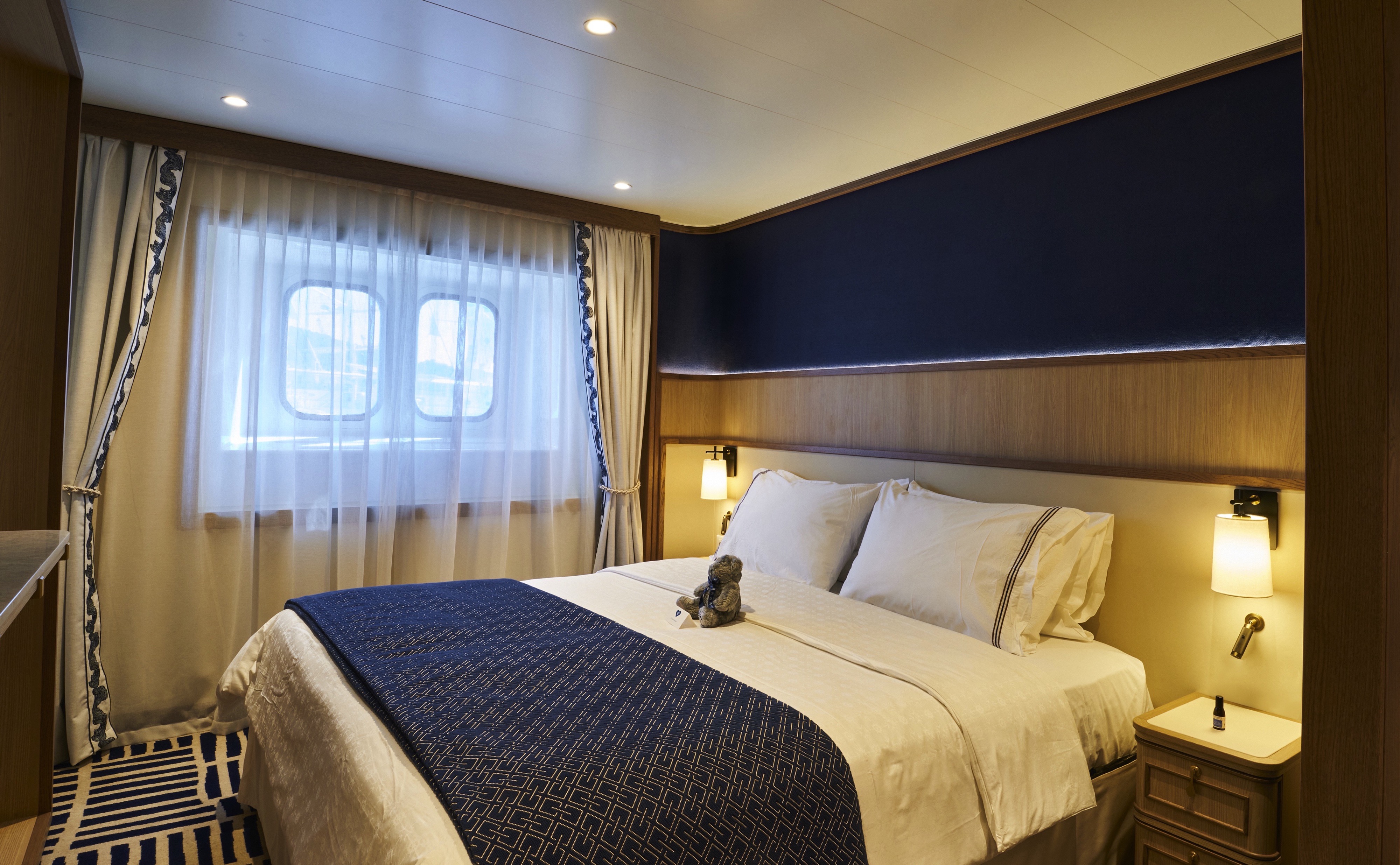
Owner's Suite
One of the best secrets in the cruise industry, this unique suite is located directly behind the Bridge. The Owner’s Suite, previously named the Officer’s Suite, is the only public accommodation near the officers’ quarters. Following the renovation, expect an elevated nautical look for true insider-y yacht life in a tucked away location.
All Accommodations Feature
- Queen Size Bed with Luxurious Linens
- Waffle Weave Robe and Slippers
- Fully Stocked Mini Bar/Refrigerator
- Hair Dryers and 110/220 outlets
- Bathroom with granite countertop and shower
- Granite vanity with magnifying mirror
- Safe
- L’Occitane Bath Amenities
- Fresh Fruit
- Wi-Fi access
- Television

Spacious Suites
Joining Windstar’s all-suite, Star Plus yachts in this unique offering, Wind Surf will offer themed Broadmoor and Sea Island Suites, which are inspired by luxury, Five Star sister resorts The Broadmoor in Colorado and Sea Island in Georgia.
With 376 square feet, you’ll find the perfect space for time together – and plenty of room for time to yourself. You’ll even enjoy two full separate bathrooms. All the amenities of the staterooms await you, plus a beautiful sitting area, and two flat-screen television sets.
Broadmoor Suite – Inspired by the design of The Broadmoor, this suite offers a traditional space with classic furniture, floral motifs, white trim with gold finishes, and wide crown moulding. New furnishings and wall sconces have been specially commissioned in the resort’s style. The striking wallpaper used in the suite’s walk-in closet is an exact replica of the wallpaper used throughout The Broadmoor. The resort’s signature carpeting, with shades of light blue, brown, yellow, and gold, was also recreated for the space. Historical black and white images of The Broadmoor will be on display.
Sea Island Suite – This suite will offer a coastal airy space with curved arches, lovely “hardwood” floors, gorgeous inset carpeting, light walls, and white trim with black finishes. New antique-style furnishings and custom wallpapers have been specially commissioned in the resort’s style. You’ll never see a TV at Sea Island (they are all tucked away in cabinets), so you won’t see one in this suite, either. Historical black and white images of Sea Island will be on display.
All Accommodations Feature
- Queen Size Bed with Luxurious Linens
- Waffle Weave Robe and Slippers
- Fully Stocked Mini Bar/Refrigerator
- Hair Dryers and 110/220 outlets
- Bathroom with granite countertop and shower
- Granite vanity with magnifying mirror
- Safe
- L’Occitane Bath Amenities
- Fresh Fruit
- Wi-Fi access
- Television
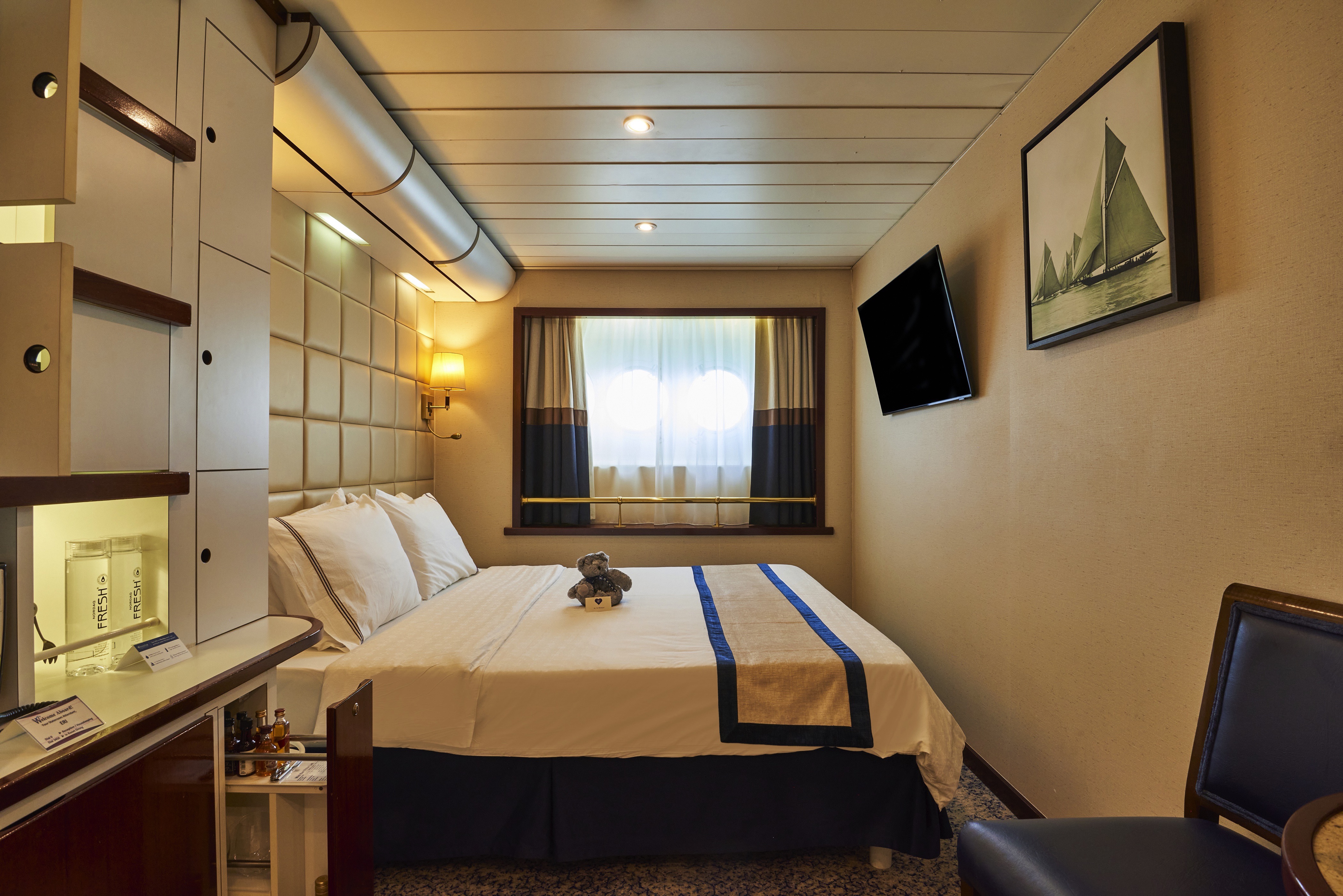
Gracious Staterooms
New connected TVs in all staterooms with the line’s Wayfinder app for finding the ship’s agenda, menus, movies and TV shows, guest accounts and more.
Stylish comfort and ocean views welcome you in 188 square feet of beautifully designed comfort. Your queen bed (which can be separated as twins if you prefer) is swathed in luxurious Egyptian cotton linens. Before or after you enjoy an invigorating massage shower with soothing L’Occitane” bath products, wrap up in your waffle-weave robe and have a snack from the fresh fruit bowl.
All Accommodations Feature
- Queen Size Bed with Luxurious Linens
- Waffle Weave Robe and Slippers
- Fully Stocked Mini Bar/Refrigerator
- Hair Dryers and 110/220 outlets
- Bathroom with granite countertop and shower
- Granite vanity with magnifying mirror
- Safe
- L’Occitane Bath Amenities
- Fresh Fruit
- Wi-Fi access
- Television
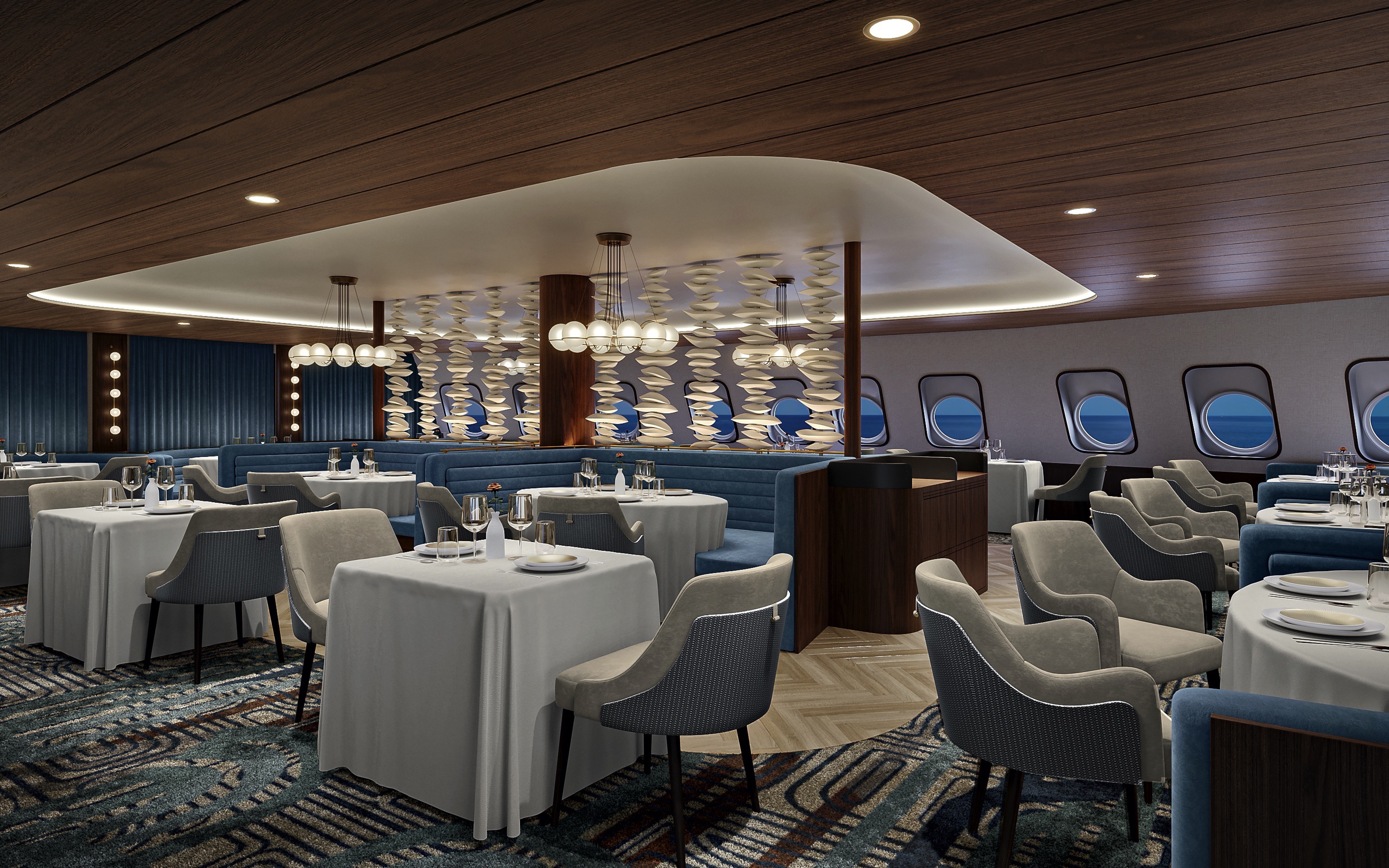
Amphora Restaurant
Wind Surf’s main dining room has been entirely refreshed setting the scene for a timeless dining experience. Amphora’s new design concept draws from elements of the sea, such as pearls, smooth stones, and sea glass, which guests will see integrated into the new architecture and furniture details. The complementing colour tones were inspired by the horizon at sunset. New seating arrangements include curved booths to seat 2-8 people, new larger dining chairs for comfort.
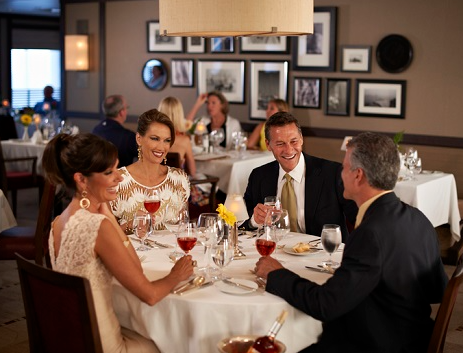
Stella Bistro
Treat your palate to the French-inspired café cuisine of Stella Bistro, Wind Surf’s alternative restaurant. You’ll find delightfully indulgent desserts and a wonderful array of wines specifically paired to the meal. (Wind Surf only)
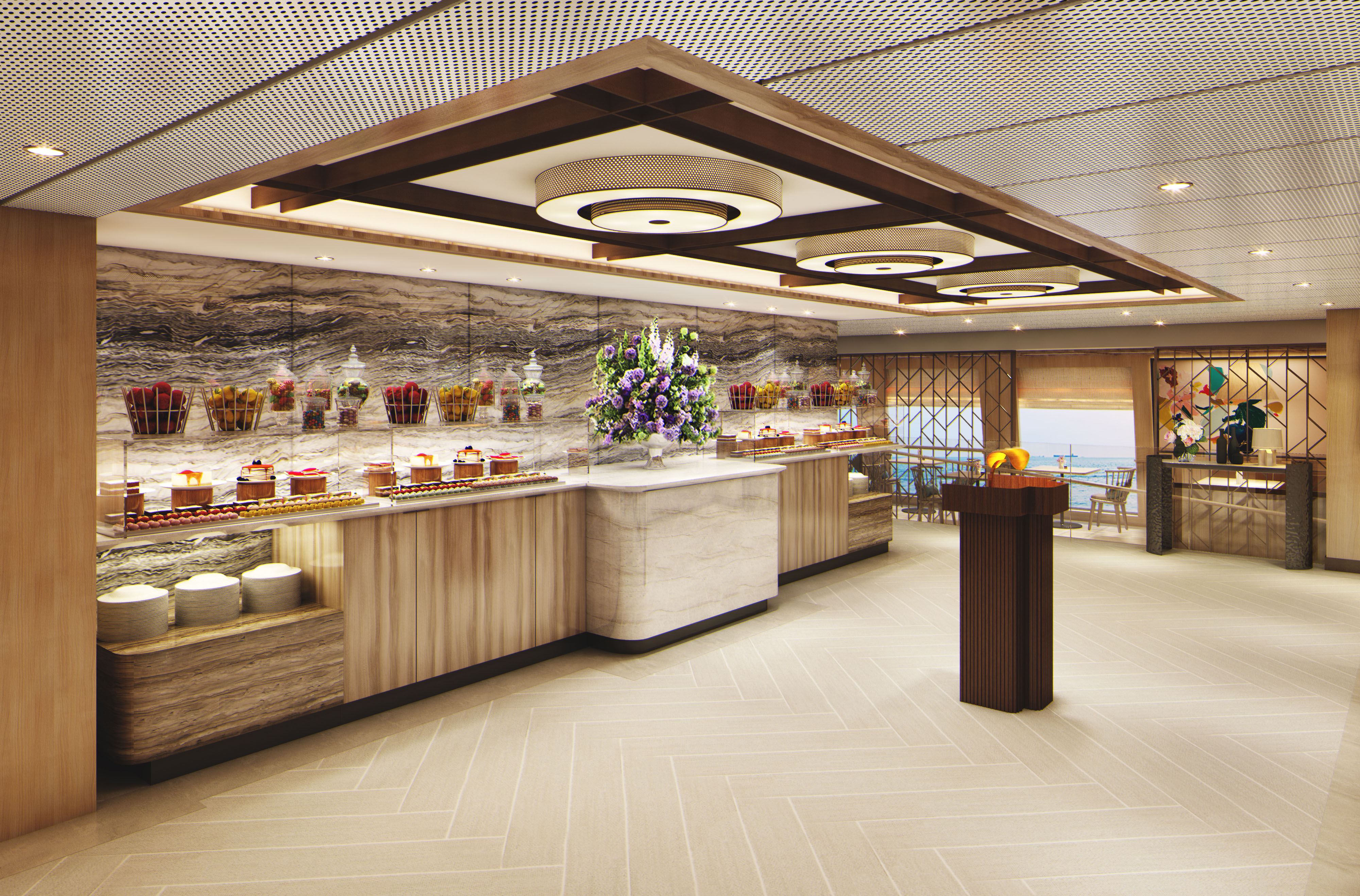
Veranda Restaurant
It’s breakfast alfresco, full service or buffet-style, anytime till 9:30 a.m. No need to hurry. Again, the choices are many in Veranda. Choose the sumptuous, seemingly endless buffet. Or, order from the lunch menu between noon and 2:30 p.m

24-Hour Room Service
Stay in tonight and even order from the main Amphora dining menu.

Shore Excursions
The Best On Land Brought To You By The Best At Sea
Choose from over 2,000 one-of-a-kind tours and activities
Get to the heart of local cultures with Windstar shore excursions.
You don’t want to just dip a toe in local culture, you want to dive into the deep end, and that’s exactly what Windstar shore excursions are designed to do. All of our excursions are created to provide authentic local experience – the kind travellers like you are looking for. And with more than 2,000 excursions to choose from, you can experience your destination in whatever way is most meaningful to you. Whether you’re an outdoor enthusiast, a foodie, a history buff or someone who loves to get to know the faces behind the many places we travel.
We make sure the hot springs are hot and the pinot grigio is chilled.
How do we find these authentic experiences, you ask? Our Product Development Team travels to each destination and personally vet each shore excursion to makes sure it makes the grade. (So yes, the Open Course Canopy Challenge in Falmouth Harbour, Antigua? They went on that.) And because we travel in small groups, we can adjust tours in real time based on guest feedback, whether that means finding a different place for lunch, or spending more time at a particularly fascinating historical site. We take the time and make the trip because we want your travels to be unforgettable.
Immersion in regional culture
Local guides share insight into their everyday world, as well as insider highlights that you don’t want to miss. As part of a smaller group, you’re able to bypass long lines, visit places off the beaten path, and get all of your questions personally answered.
Private tours available
Explore at your leisure with a private vehicle, driver, and English-speaking guide. These exclusive tours allow you to customise your time ashore and explore the sites most interesting to you in the comfort and privacy of your own car or van. With your private vehicle, and the personalised attention of your driver and guide, you will have the flexibility and independence to design your own unique tour. This is a great option for families and groups traveling together.
Quality and convenience
Every Windstar excursion meets our high standards of enjoyment, safety, and professionalism. Tour departure times coincide with your ship’s schedule and depart right from the pier. All of our tour operators are fully insured, licensed, and bonded. Our guests consistently rate their shore excursion experiences as excellent.
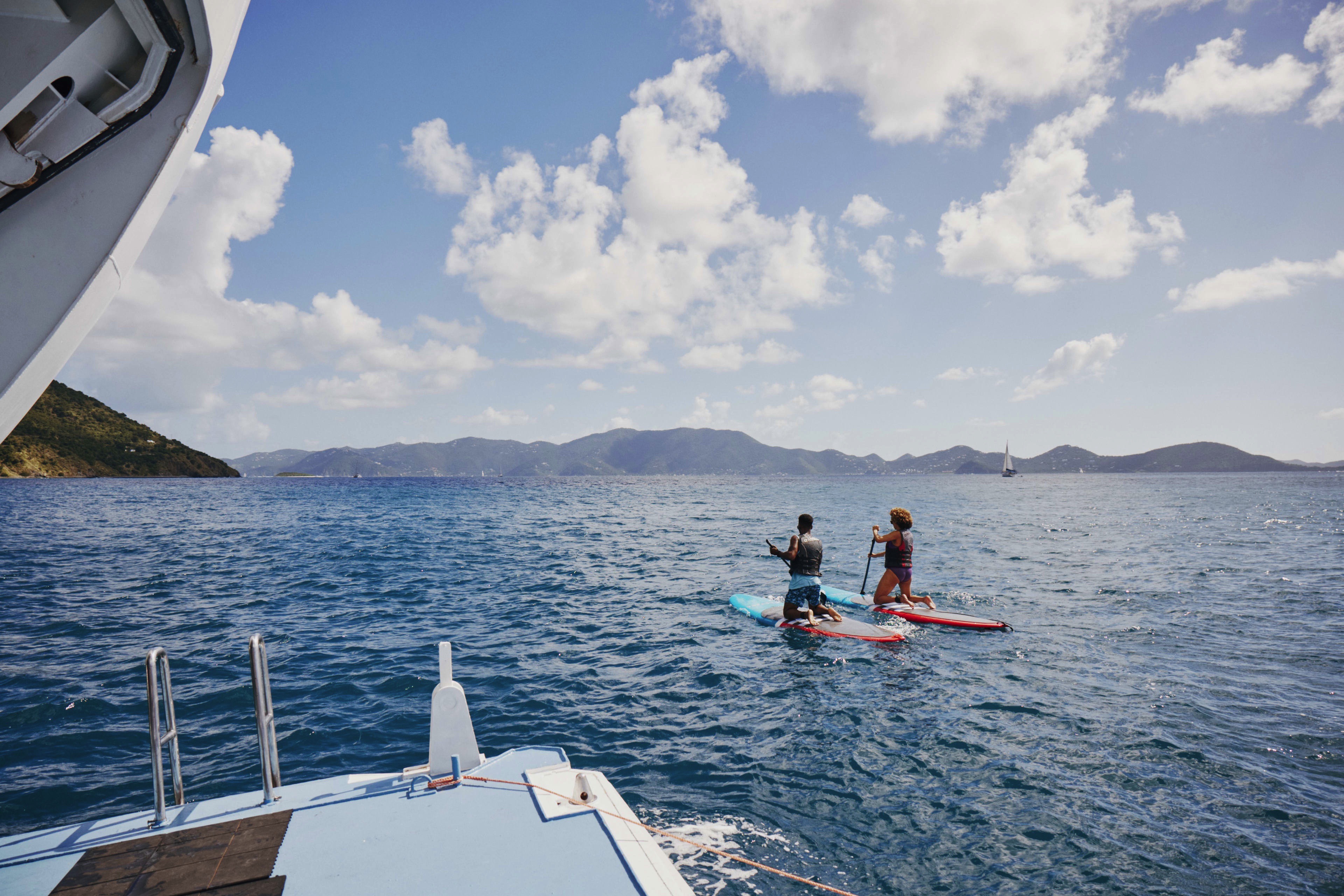
Watersports Platform
Jump In For Fun
A cruise to Tahiti, the Mediterranean or the Caribbean isn’t just about the land. It’s about the sea. That warm, turquoise water is more than willing to answer your question about what to do today, and the phenomenal Watersports Platform on the stern of your Windstar yacht is more than willing to provide the means — no beach required. It’s just one more way our yachts get you closer to your destination.
COMPLIMENTARY WATERSPORTS EQUIPMENT AND ACTIVITIES INCLUDE*:
- Snorkelling gear (a personal custom-fit set for your use throughout your Tahiti cruise and in select Caribbean and Central America destinations)
- Stand-up paddleboards
- Kayaks
- Foam flotation magic carpet
- Water trampoline
- Sailboat
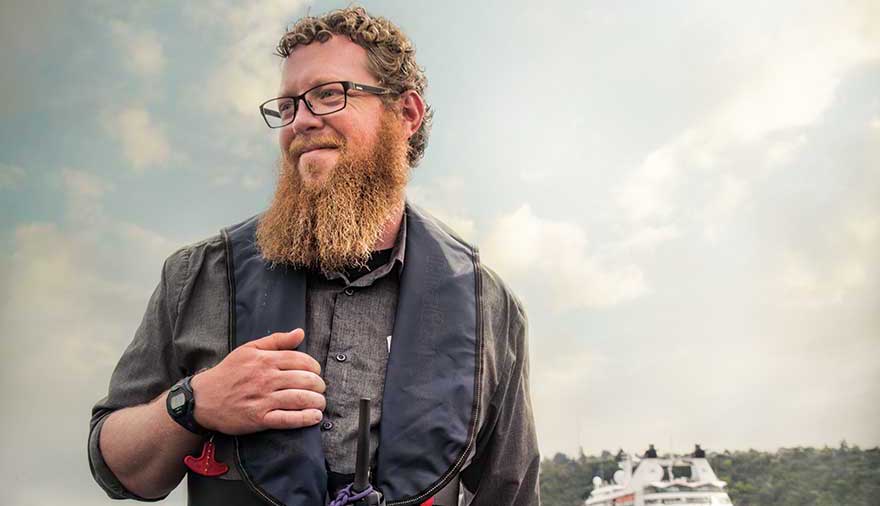
Guest Lectures
On select Windstar voyages, satisfy your curiosity and enhance your understanding of the local culture by listening to our onboard lecturers. We’ve curated a group of speakers designed to bring you an insider’s perspective on a multitude of intriguing topics. Listen raptly as your voyage becomes more than just a vacation – and a thought-provoking exploration of enchanting lands.
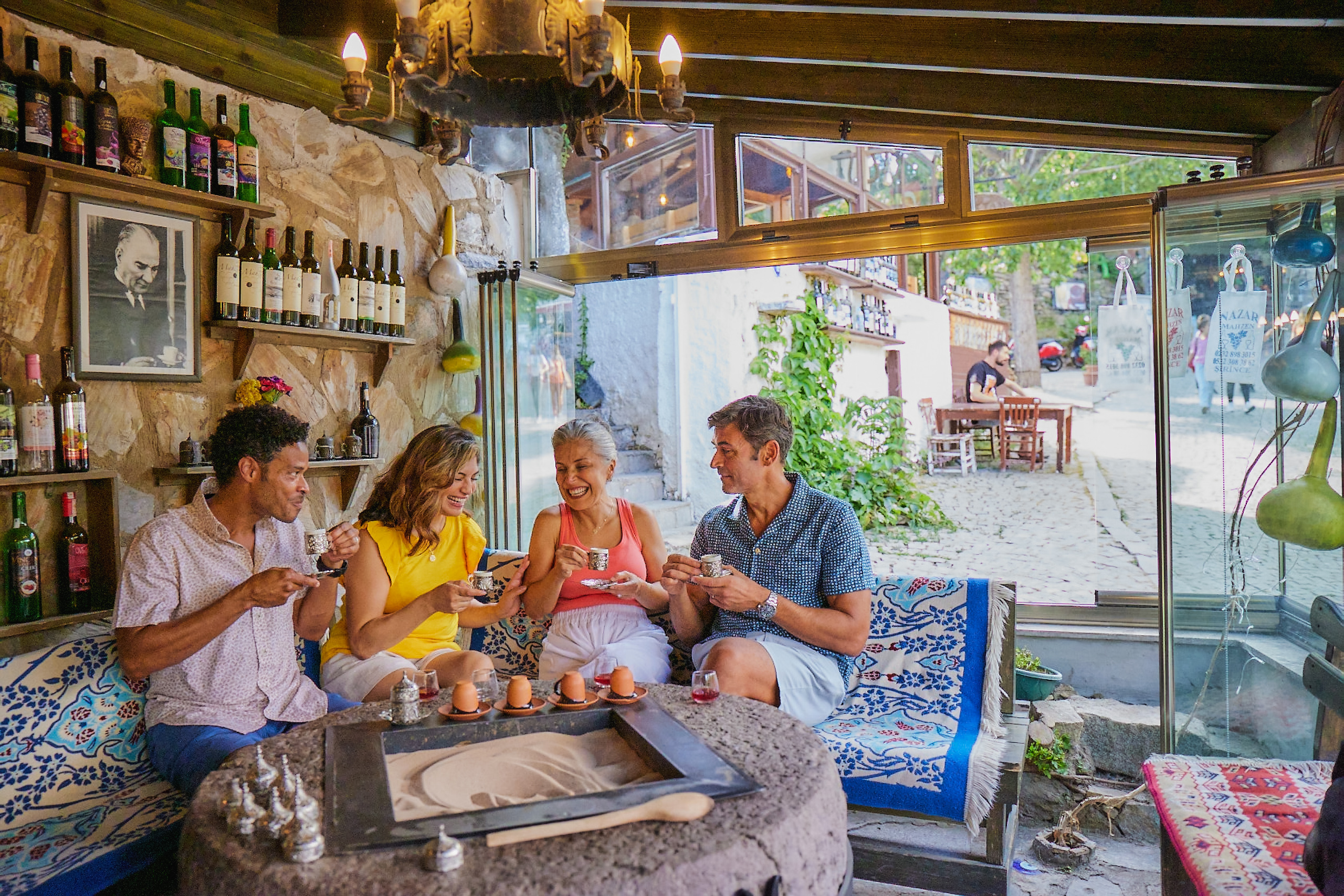
Windstar Signature Expeditions
We’re Taking Travellers to a Different Alaska
Introducing the Windstar Signature Expeditions program. Helmed by a team of on board expedition experts who sail with the cruise the entire time, they’ll provide more insight, understanding, and commentary to show you an Alaska you’ve never seen before. Consisting of naturalists, glaciologists, historians and more, this team of experts will also lead guided tours, sometimes directly from the ship to some of the most remote areas of the Alaskan frontier.
Each once-in-a-lifetime experience will leave you hungry for more of the real flavors of Alaska. Book your Alaska cruise and Signature Expeditions today.
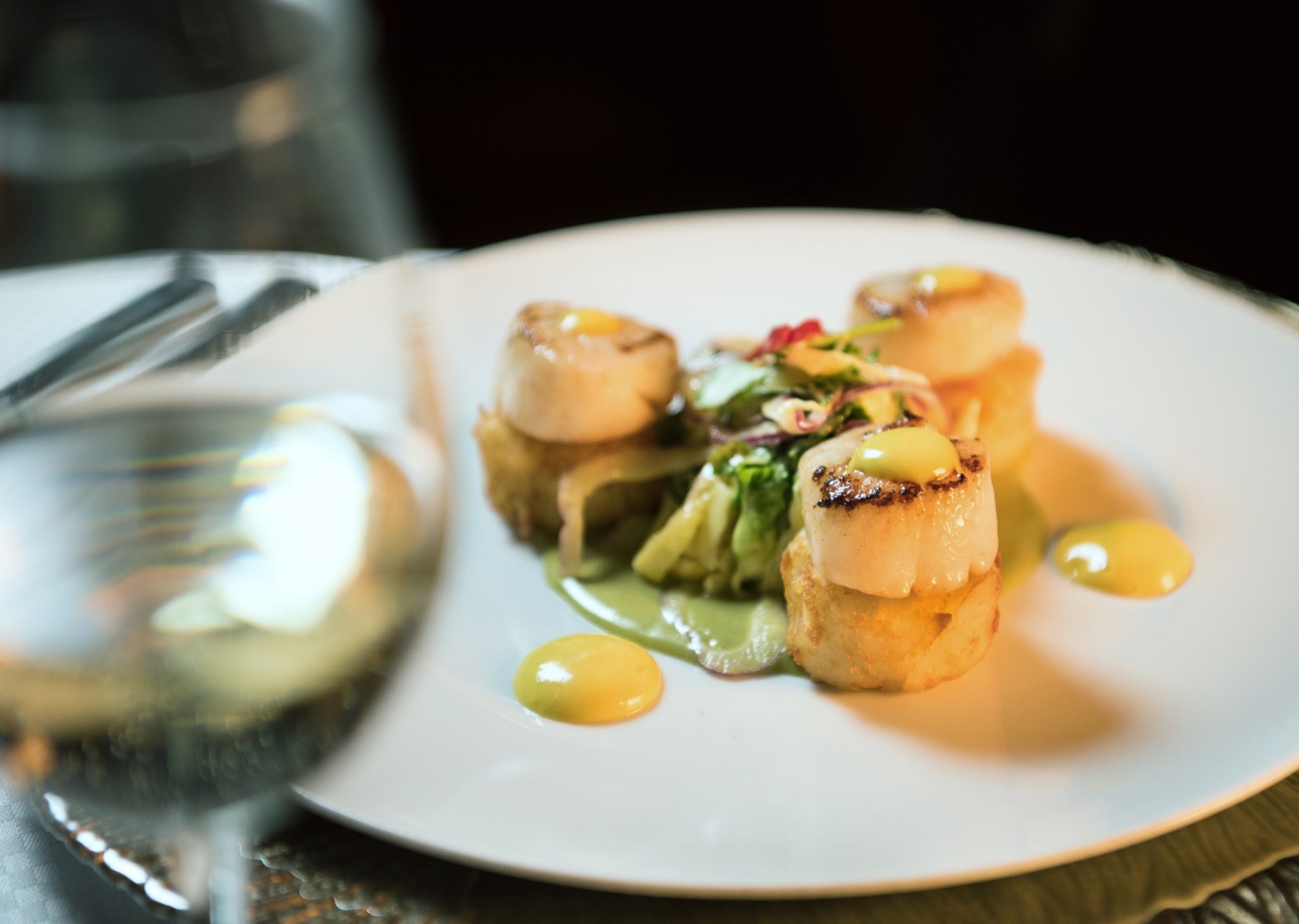
Culinary Demonstrations
Delight your palette with onboard cooking demonstrations featuring James Beard Foundation chef recipes. From wild striped bass with tomato sage “fondue” to lobster risotto, our Windstar chefs will take your taste buds on a journey through local cuisine. For a special tantalising treat, join Windstar on one of our voyages in the James Beard Foundation Culinary Cruise Collection, where a James Beard Foundation chef will show you how to elevate your own culinary skills. It’s a taste of enrichment you’ll never forget.
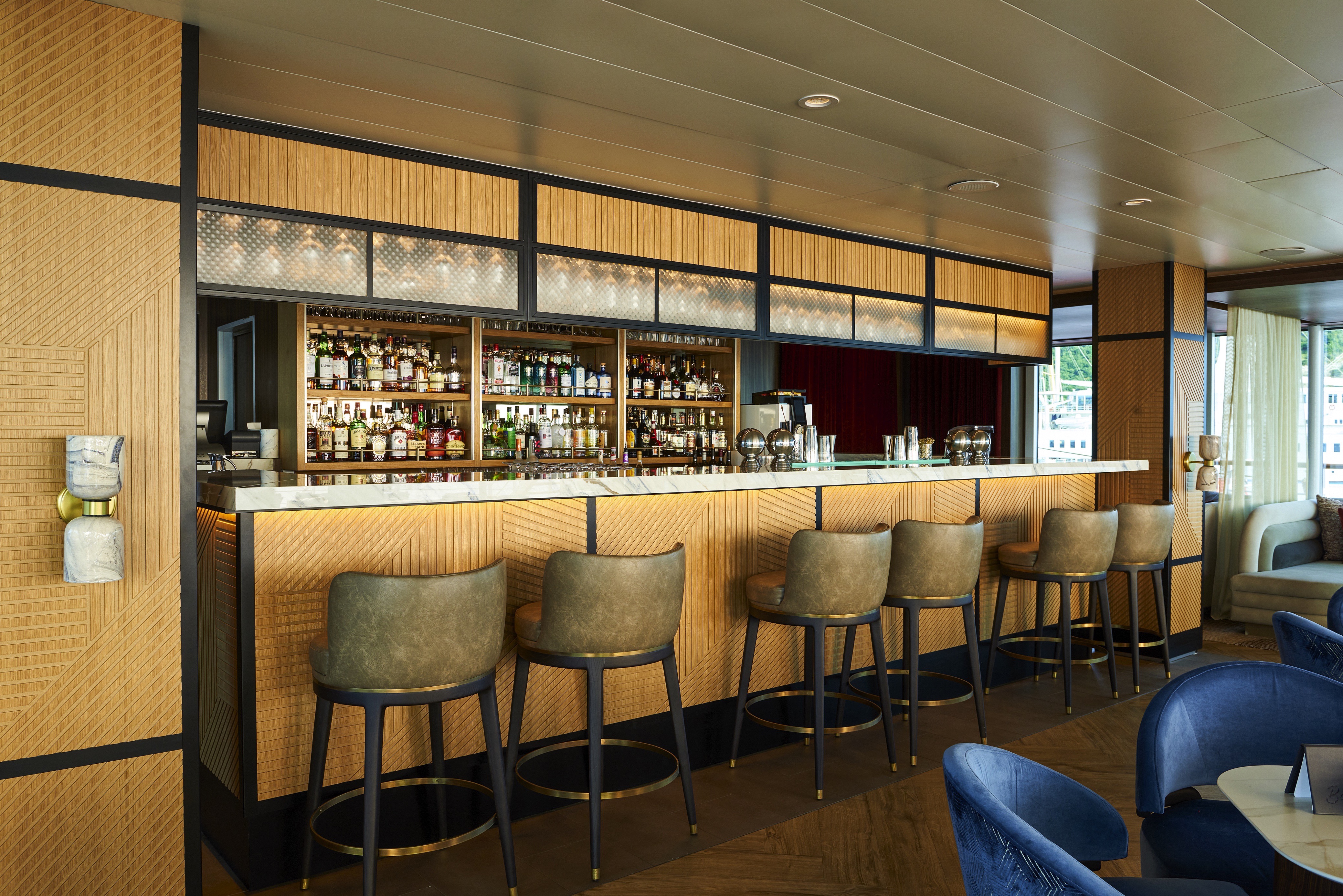
Compass Rose Bar
The ship’s Compass Rose features comfortable, modern décor with pops of blue and orange, a chic bar, and a new multi-purpose stage area ideal for live music and local performances.
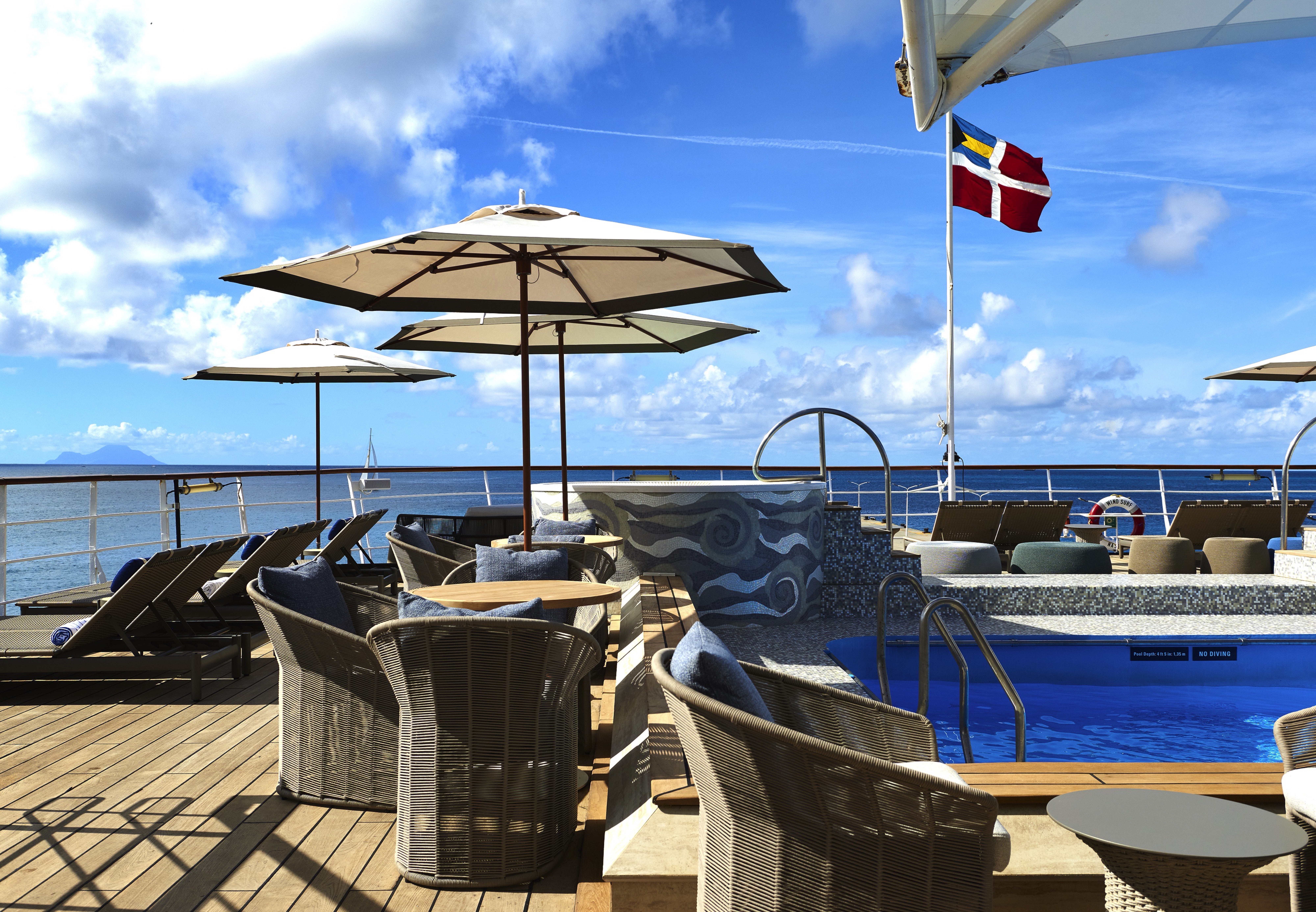
Pool Deck & Bar
This space will now maximise Wind Surf’s ocean views and create a more convivial vibe for poolside lounging and top-shelf mixology. Tropical scenes and greenery at the bar pull in a natural, outdoor atmosphere. Soothing natural colours convey a beach scene and new arty tiling on the two whirlpools take the form of ocean waves. Look for a variety of new outdoor furniture as well.

Star Boutique
A larger retail area with upscale details, reminiscent of a luxury brand store’s shopping experience.
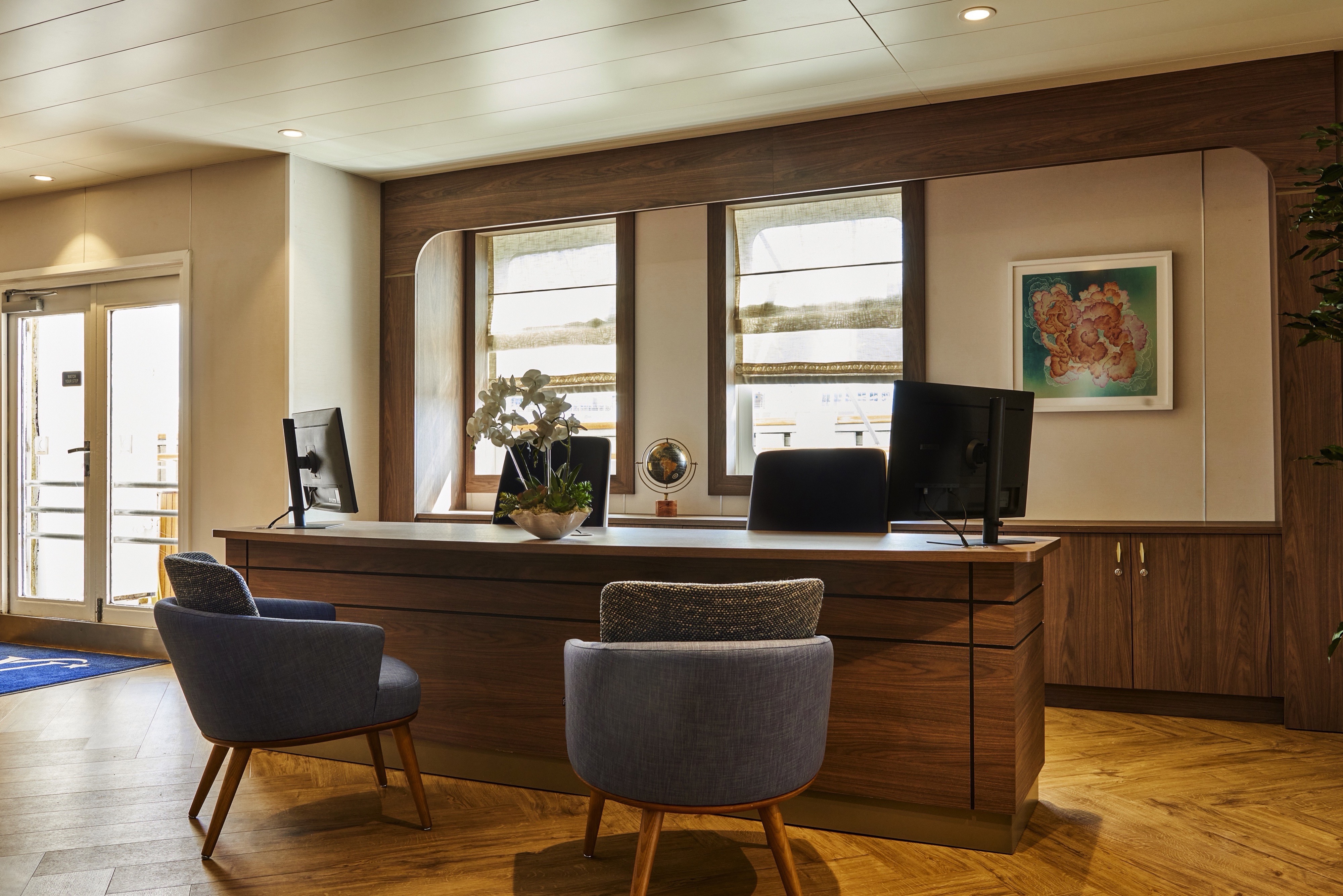
Reception
A new, more welcoming location that’s better able to serve guests with additional seating options, plus an updated and fresh (yet still nautical) vibe akin to a boutique hotel.
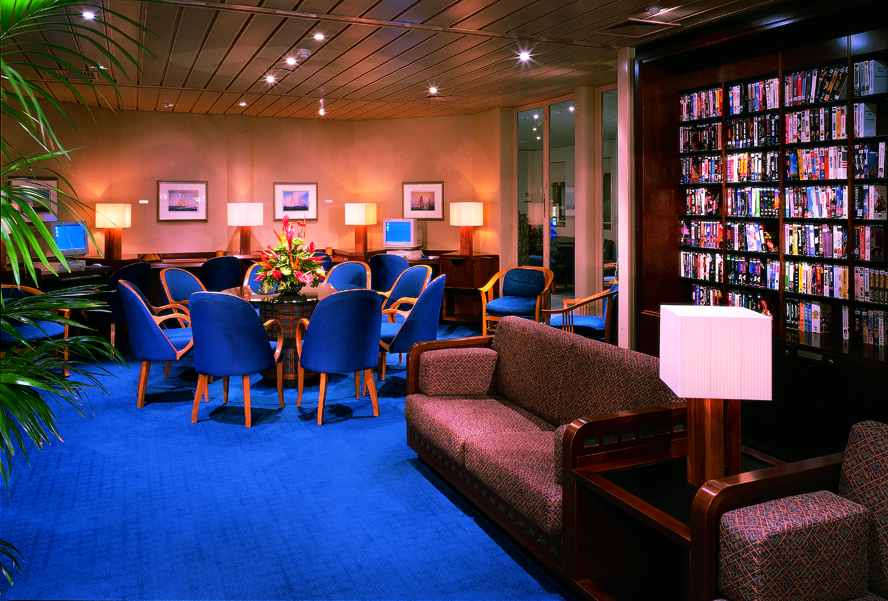
Onboard Entertainment
Onboard entertainment facilities include: a casino, a watersports platform, the Compass Rose Cocktail Bar, The Lounge, and The Terrace Bar.
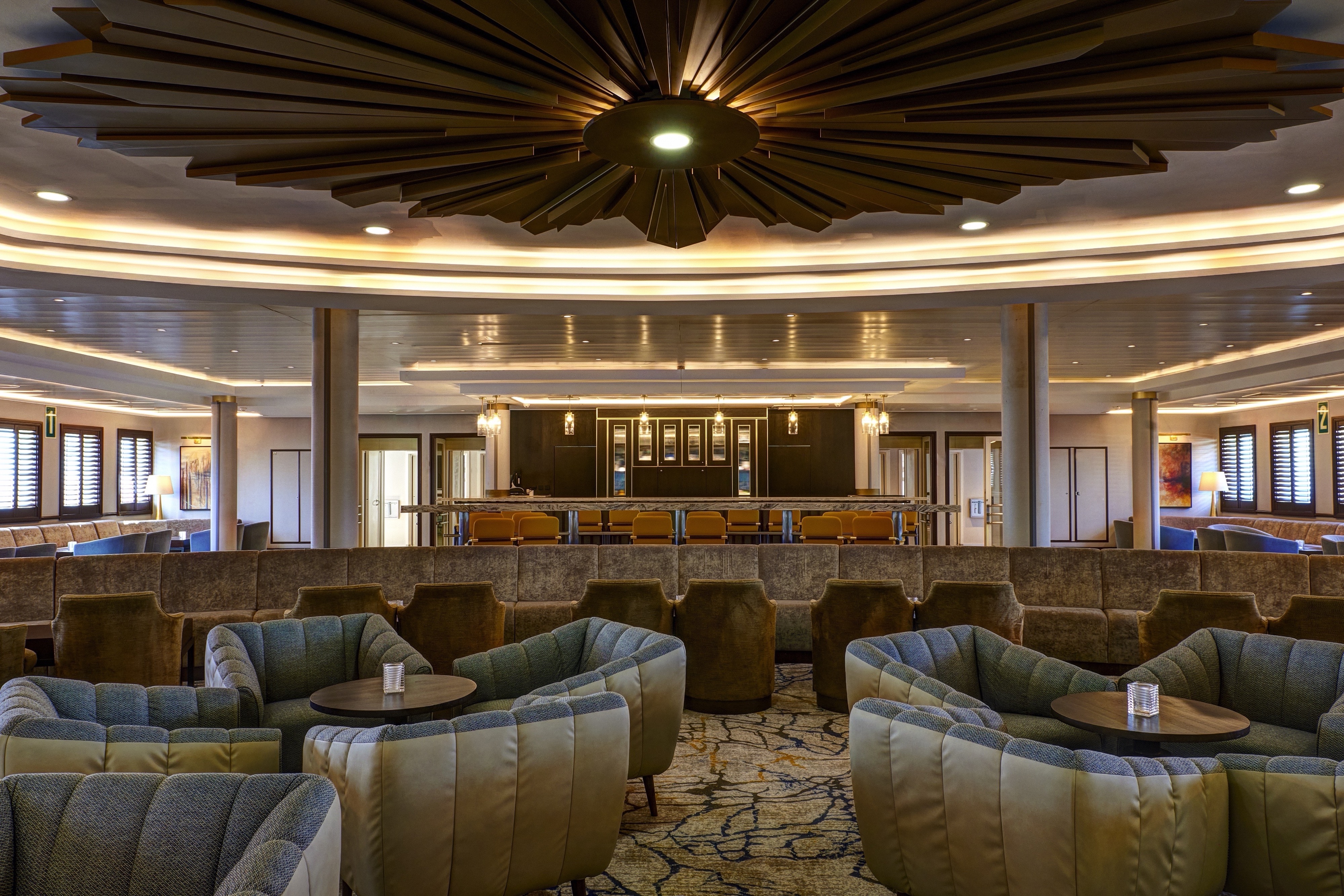
Lounge
An expanded lounge with new lights and sound for upcoming stage performances.
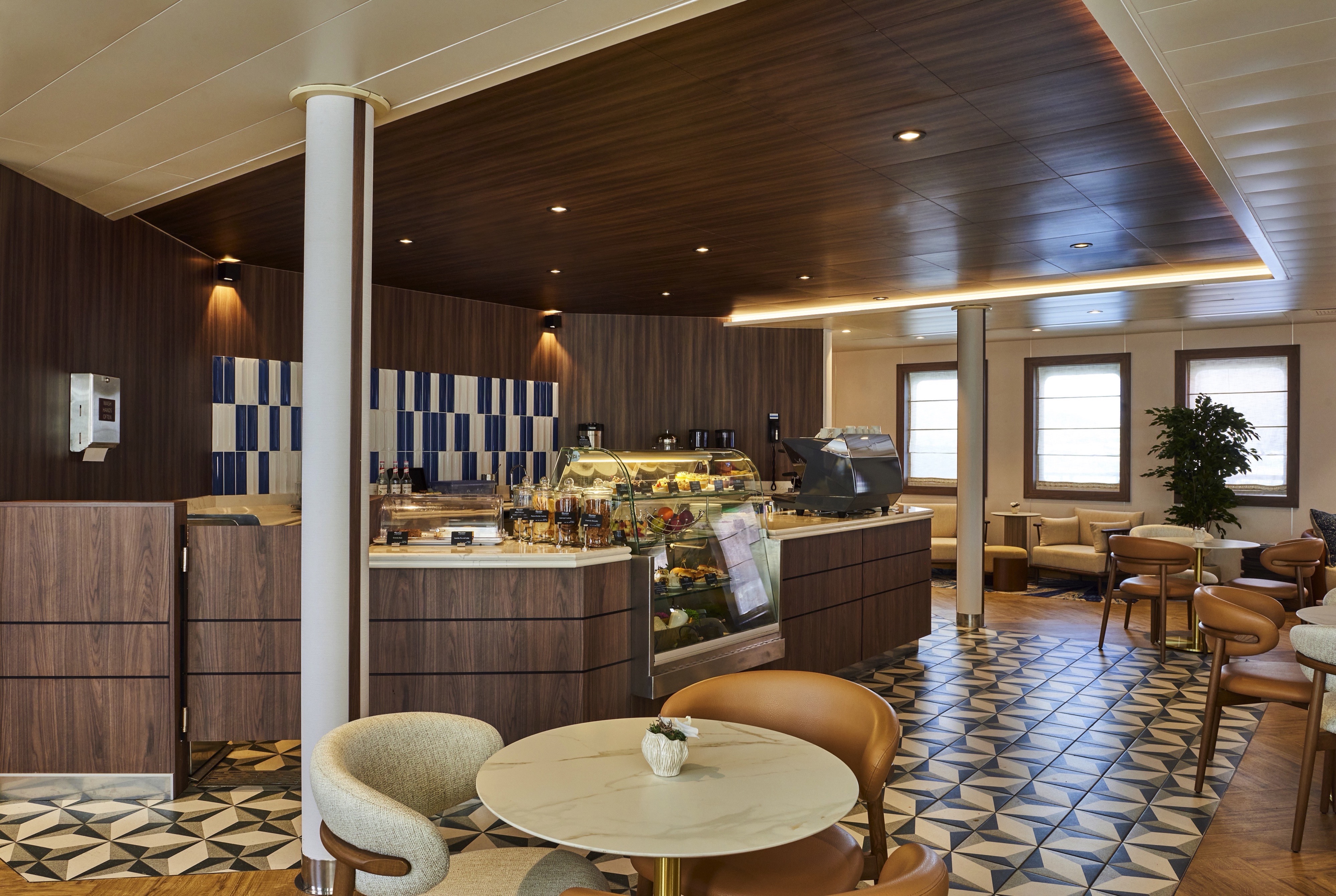
Yacht Club Café
The Yacht Club Café can be found on the Main Deck.
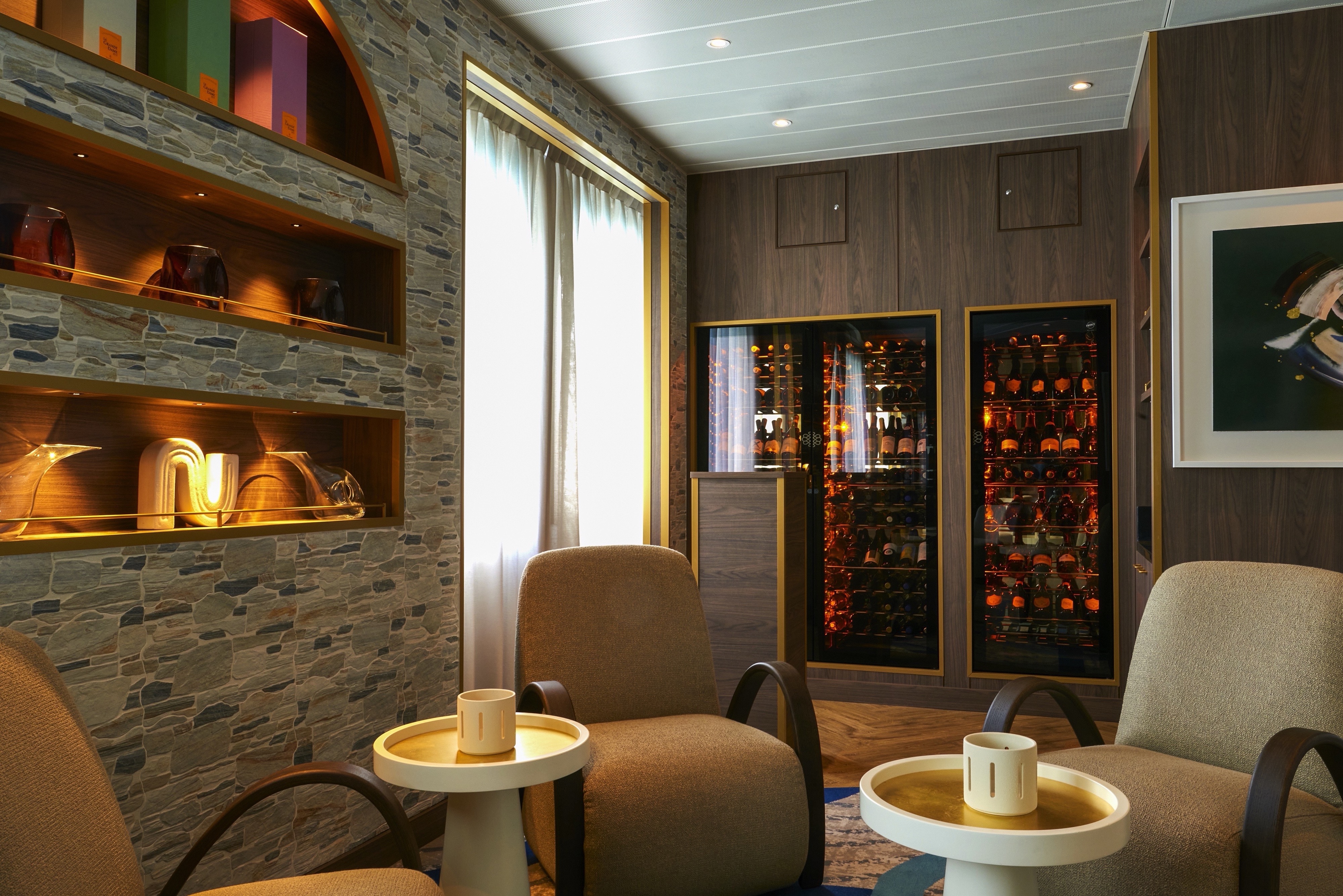
Wine Room
Located on the Main Deck
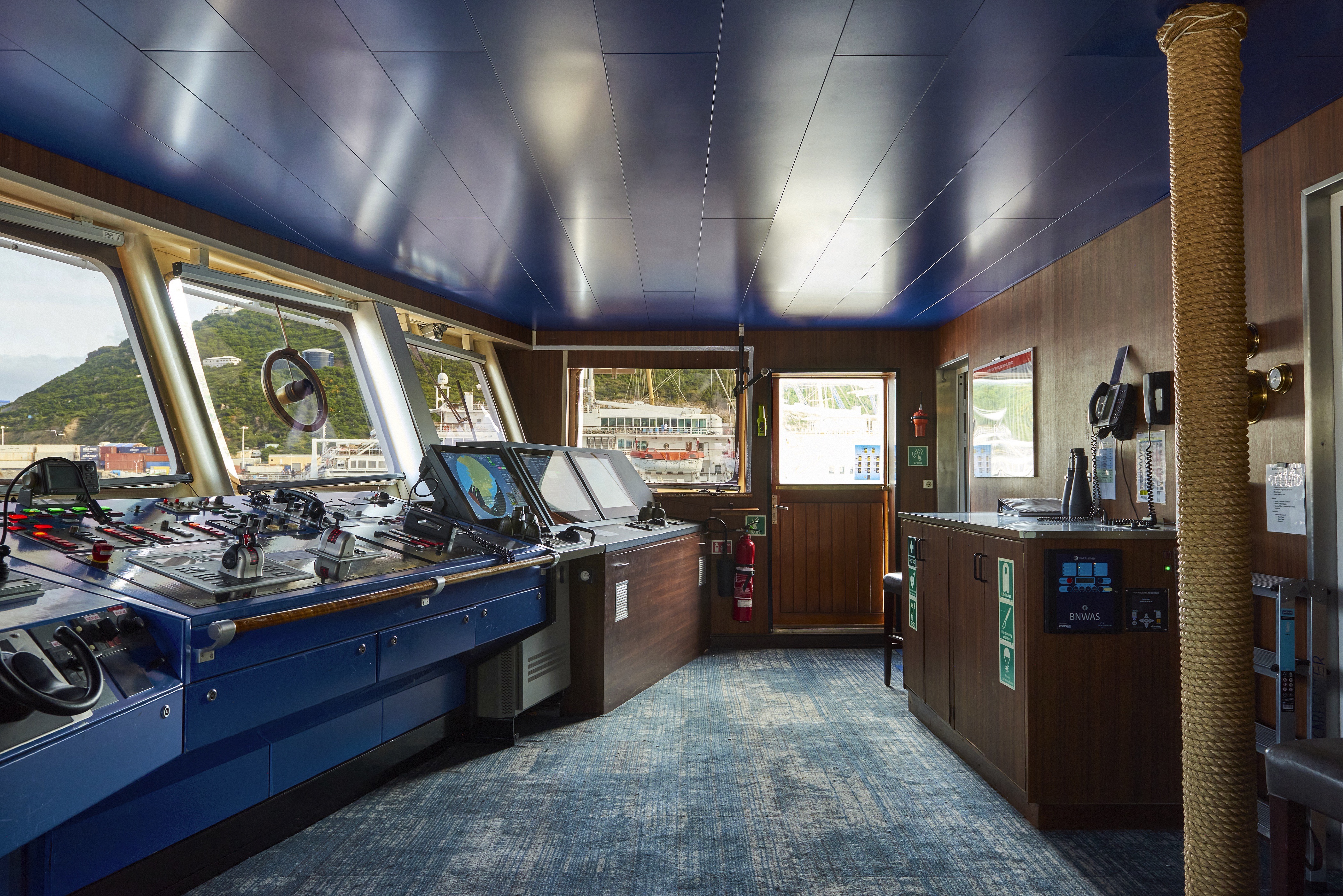
Bridge
Located on Bridge Deck

Health and Fitness Facilities
Health & Fitness facilities include a Fitness Centre, whirlpool, and swimming pool.

WindSpa
Relax into the destinations you’re visiting at the new World Spa by Windstar, which will offer regional spa treatments, including massage styles like Swedish, Japanese Shiatsu and Hawaiian Lomi Lomi.

Pool Area
Located on the Main Deck
Guests With Disabilities
Windstar does not discriminate against persons on the basis of disability. We seek, to the extent feasible, to accommodate the needs of persons with disabilities. There are no elevators on Wind Star and Wind Spirit nor were the ships originally constructed to be wheelchair accessible. As a result, these ships may be unsuitable for people relying solely on wheelchairs. The other yachts are equipped with elevators, but staterooms on Wind Surf are not wheelchair accessible. Also note, there is no elevator access to board the ship. Star Pride, Star Breeze, and Star Legend have modified wheelchair accessible suites available.
Certain ports require the ship to anchor; in this case guests must be ferried into port. Service Dogs are permitted onboard ships if prior arrangements have been made at time of booking. In limited situations where an individual with a disability would be unable to satisfy certain specified safety and other criteria, even when provided with appropriate auxiliary aids and services, we may find it necessary to ask the individual to make alternative travel arrangements. It is essential that Windstar is notified of any special medical, physical or other requirements you may have at the time of booking. For additional information, please contact accessdesk@windstarcruises.com
Age Restrictions
Windstar Cruises is unable to accommodate children under eight (8) years of age. All Guests under 21 years of age must be accompanied by a parent, guardian or chaperone who is at least 21 years old. Parents, guardians, and chaperones are responsible for overseeing the onboard conduct of minors. Alcoholic beverages will not be served to guests under age 21.
For family groups booking multiple staterooms, the minimum age for at least one person in each stateroom is 18 years of age, provided they are traveling with a parent, guardian or chaperone.
Dress Code
The less you bring the better. We suggest clothes that are light, cool, and made of natural fabrics like cotton and silk. You may wish to bring warmer clothing (layers are best), if you are traveling on an Ocean Crossing or an autumn Mediterranean cruise. Additionally, many guests find it helpful to pack water shoes when visiting Tahiti and other tropical islands as the beaches may have rocks or coral.
The Dress Code – from 7 am – 6 pm guests are welcome to dress as they please with the exception of no swimwear in all public lounges and restaurants and no clothing with offensive language or graphics that distract from the comfort and well-being of others. The general shipboard style is elegant, but relaxed including jeans and Bermuda/ walking shorts.
In the evening – after 6 pm when dining in Amphora, Stella Bistro or Cuadro 44 by Anthony Sasso, the dress code is country club-type clothing. For men – nice slacks, polo shirts, button down shirts, shoes other than athletic shoes. Designer denim jeans without rips or holes or are multi-coloured are also acceptable. Sport coats are optional. Ties are not needed. For women – nice pants, skirts, tops, casual dresses, sundresses, nice sandals or casual shoes and designer denim dress jeans not ripped or multi-coloured or having holes. Blazers are optional.
Premium Beverage Package
While non-alcoholic beverages are complimentary, you may enjoy a pre-dinner cocktail under the setting sun or a champagne toast at the evening Sail Away with our beverage packages for wine, beer, cocktails and more. Zero-proof cocktails are also included with our Captain’s Exclusive and All-In packages. Find the perfect wine pairing with your meal and then end the night sipping scotch as you contemplate the stars.
Topmast Discoveries Beer & Wine Package – $55 per person per day An extensive package of diverse and intriguing wines from traditional European winegrowing terroirs to New World regions. Includes domestic and imported beer and 33 varieties of wine by the glass.
Captain’s Exclusive Beverage Package – $65 per person per day The ultimate beverage package and the perfect way to try new drinks for a bit of added adventure. Includes all domestic and imported beers and 33 varieties of wine/sparkling/champagne by the glass PLUS cordials, liqueurs, apertifs, cocktails and even mini bar items. (Cocktails based on house & select brands)
The All-In Package – From $99 per person per day. Have it all by making it an all-inclusive voyage with Wi-Fi, unlimited beer, wine & cocktails, and gratuities, including the 18% beverage service charge. A convenient bundle that saves time and money, pays most of your expenses upfront and avoids the European VA Tax when pre-purchased. The All-In Package is sold per person and must be purchased up to 5 days prior to departure at $99. On board the All-In Package can be purchased for $99.
The Topmast, Captain’s Exclusive, and All-In Packages are sold per person and must be purchased in advance or during the first 2 days of your cruise and for the full duration of the cruise. Prices for the Topmast and Captain’s Exclusive Packages do not include the standard 18% beverage service charge. Package prices are inclusive of applicable taxes. The minimum drinking age aboard Windstar Cruises is 21 years old.
Laundry Service
Laundry service is provided on board at a nominal charge. Dry cleaning is not available. Laundry Service Packages must be added by the first day of the cruise and will be priced by the total number of cruise days. Pricing is inclusive of applicable taxes.
Your Windstar Voyage Includes
- All meals in all venues at all times, including room service menu available 24 hours
- All non-alcoholic beverages, including cappuccino, espresso, and other specialty non-alcoholic drinks
- Welcome cocktails at reception
- All onboard entertainment
- Unlimited use of Fitness Center
- Unlimited use of all water sports equipment
- Informative nightly port talks and destination briefings
Food Allergies and Special Dietary Needs
Here at Windstar we are committed to offering our guests healthy food selections. We offer vegetarian selections and lighter fare options, seeking to provide the freshest, top quality foods handled with the utmost care. If you have food allergies or special dietary needs, there are several ways to notify us prior to boarding the ship.
It’s important to let us know about your special request when you book your cruise to help us plan and prepare for your meals. Your travel professional will enter this information in Special Requests. It is then noted on your booking and your ship will be notified, although it will not appear on your invoice or in My Windstar.
Special Request Dietary Needs include:
- Alcohol Free
- Celiac
- Dairy Free
- Diabetic – Diet Controlled
- Diabetic – Insulin Controlled
- Food Allergy
- Gluten Free
- Lactose Intolerant
- Low Carbohydrate
- Low Cholesterol
- Low Protein
- Low Sodium
- Other Dietary
- Sugar Free
- Vegan
- Vegetarian
- Wheat Free Diet
Unfortunately we are unable to accommodate Kosher or Halal meals. If you have specific dietary needs– such as – lactose intolerant requiring almond milk – please complete a Special Requirements Information Form. Return this information via:
- Mail to Windstar Vacation Planning at 8400 NW 36th St. Suite 520, Miami, FL U.S.A. 33166
- Fax to 786-685-3089
- Call 1-888-502-9621 to speak with a Vacation Planner in person
- Send an email to info@windstarcruises.com
When you embark the ship please feel free to ask to speak with the Executive Chef about your specific request.
If you have any additional questions or concerns please call us during business hours at 1-888-502-9621.
Smoking Policy
Smoking or vaping is not permitted in any of the staterooms, suites, or public spaces, including all restaurants and corridors. Smoking and vaping is permitted on the outside decks in designated smoking areas only. Smoking cigars is permitted in a specific designated area on each yacht, however, only sold on board the Cigar Room of Wind Surf.
Internet/Wifi Access
Communications At Sea
EMAIL – Windstar Cruises offers full internet capabilities, depending on course and position of the ship, as well as wireless internet service on all ships. Wi-Fi access is possible in most public areas, staterooms, and suites.
POSTAL MAIL – You can receive mail while on board, but guests are discouraged from relying on postal mail.. Please call a Vacation Planner at 1-888-502-9621 for information on shipping options and lead times to ensure your mail arrives in time for your visit to a given port of call.
Phone & Fax Communications
Guests on board may make phone calls from their stateroom or suite at a cost of $7.95 per minute.
Emergency Phone Numbers:
During regular business hours please call 1-888-502-9621 or 206-733-2704 (8:00 am to 10:00 pm Monday through Friday; 9:00 am to 7:30 pm Saturday; 10:00 am to 6:30 pm Eastern Time). Outside of these hours and during holidays, call 206-733-2991 (This number is for emergency use only; please do not call unless you are experiencing an emergency of an urgent nature).
INTERNET ACCESS – As part of our onboard service we offer internet access on our ships. We recently modified our internet usage packages from minutes to the amount of data used.
How does internet access at home differ from access at sea?
As with all ship communications, the internet service is operated through satellites. While you are most likely used to a fast internet connection at home, in hotels or other local Wi-Fi spots, internet at sea can be slow, and at times, disruptive. The only option available is satellite connection, which is costly and limits the amount of data used. The connection is also influenced by weather, the movement of the ship, and in the case of our sailing ships, blockage from our sails passing in front of the satellite dish.
It is not recommended for downloading movies or large files due to system speed. In some areas the service can be interrupted by weather or the ship’s position. We recommend that guests use the service only for emails or small files.
Why did the Internet Usage Plan change from minutes to megabytes?
Windstar modified the Internet Usage Plan in order to provide guests with the ability to access the same number of sites and/or read the same number of emails, regardless of connection speed. The previous plan was based on the number of minutes the guest was accessing the internet, regardless of connection speed. At times, factors like bad weather, ship speed, overcast conditions, all contributed to slow and/or disrupted connections.
What is a megabyte (MB)?
Any file, whether it’s a spreadsheet, word document, or email, takes up electronic storage space, otherwise known as bytes. The larger the file, the greater the number of bytes. The standard increment of measurement is bytes, kilobytes (1000 bytes), megabytes (1,000,000 bytes) and gigabytes (1,000,000,000, bytes).
As a frame of reference, an 80-word email is around 10 kilobytes, while a typical web page is approximately 1 megabyte.
What type of Internet Usage Plans are available?
The Email Plan $60 – This plan gives you 200 MB of data to use during your cruise. This plan is recommended for people who will be checking email and doing very limited browsing. The estimated minutes range from 15 to 60.
The Surfing Plan $120 – This plan gives you 500 MB of data to use for additional browsing and small file transfers (such as posting pictures to a social media site). The estimated minutes range from 90 to 360 (approximately 5 hours).
The Ultimate Plan – Unlimited Internet Package
- -7 Day Cost $245
- -8 Day Cost $280
- -9 Day Cost $315
- -10 Day Cost $350
- -11 Day Cost $385
- -14 Day Cost $490
- -15 Day Cost $525
This plan gives you unlimited internet access. You have no worries about how much time you spend on the internet.
How can I get internet access on board?
Guests can purchase Internet Usage Plans prior to their cruise through a Vacation Planner or on board at Reception. These plans can be used on personal laptops or smart devises that are Wi-Fi enabled.
* Please Note: All packages only allow for one device at a time to be connected to the internet.
Please contact a Vacation Planner if you have questions.
Medical Facilities
A doctor and limited medical facilities are available on board. However, if you take special medications, please bring an adequate supply with you together with a copy of the prescription from your doctor; it may not be available on board. Medical services and all medicines (except acetaminophen, aspirin, and seasickness pills) dispensed by the ship’s doctor will be charged to your onboard account. If you become ill during the voyage and the physician is unable to care for your needs on board, you will be transferred to medical facilities on shore. Shoreside medical care and/or evacuation are not charged to your onboard account. You will be responsible for paying all of these charges.
If you will require a special medical apparatus or assistance on board or have any special medical, physical or other requirements, please contact our Vacation Planners Department at 1-888-502-9621. Due to limited medical facilities, we will not accept reservations for children under 8 years of age or women who are 24 or more weeks pregnant at the time their travel with Windstar concludes.

Star Deck
- Stella Bistro
- Veranda/Candles
- Fitness Centre
- Terrace Bar

Bridge Deck
- Bridge
- World Spa by Windstar
- Compass Rose Bar
- Owner’s Suite
- Broadmoor Suite
- Sea Island Suite

Main Deck
- Amphora Restaurant
- Amphora Wine Room
- Lounge
- Reception
- Yacht Club Café
- Cruise Consultant Desk
- Destination Desk
- Star Boutique
- Pool / Pool Bar
- Whirlpools

Deck Three
- Suites
- TX Staterooms

Deck Two
- Watersports Platform
- A Staterooms
- AX Staterooms

Deck One
- BX Staterooms
- B Staterooms
- Medical Facility

